GMKTec G9 Ver.2 NAS Review – Cooler Now?
Important – My original review of the GMKTec G9 NAS in it’s original design can be found HERE on YouTube and HERE on the NASCompares blog.
The GMKTec G9 NucBox NAS has re-emerged in mid-2025 with a revised cooling design, following a wave of thermal criticism directed at the original release earlier in the year. Still marketed as an SSD-only NAS aimed at home and small office environments, the G9 maintains its core identity—a compact enclosure powered by Intel’s N150 quad-core processor, soldered LPDDR5 memory, and four M.2 NVMe SSD bays. The G9’s primary appeal continues to be its affordability, silent operation, and dual-use flexibility as both a NAS and lightweight desktop system, thanks to the inclusion of Windows 11 Pro and Ubuntu out of the box. However, early buyers and reviewers, including this channel, highlighted persistent thermal issues affecting SSD performance and overall system reliability under load, leading to thermal throttling even during idle states in warmer environments.
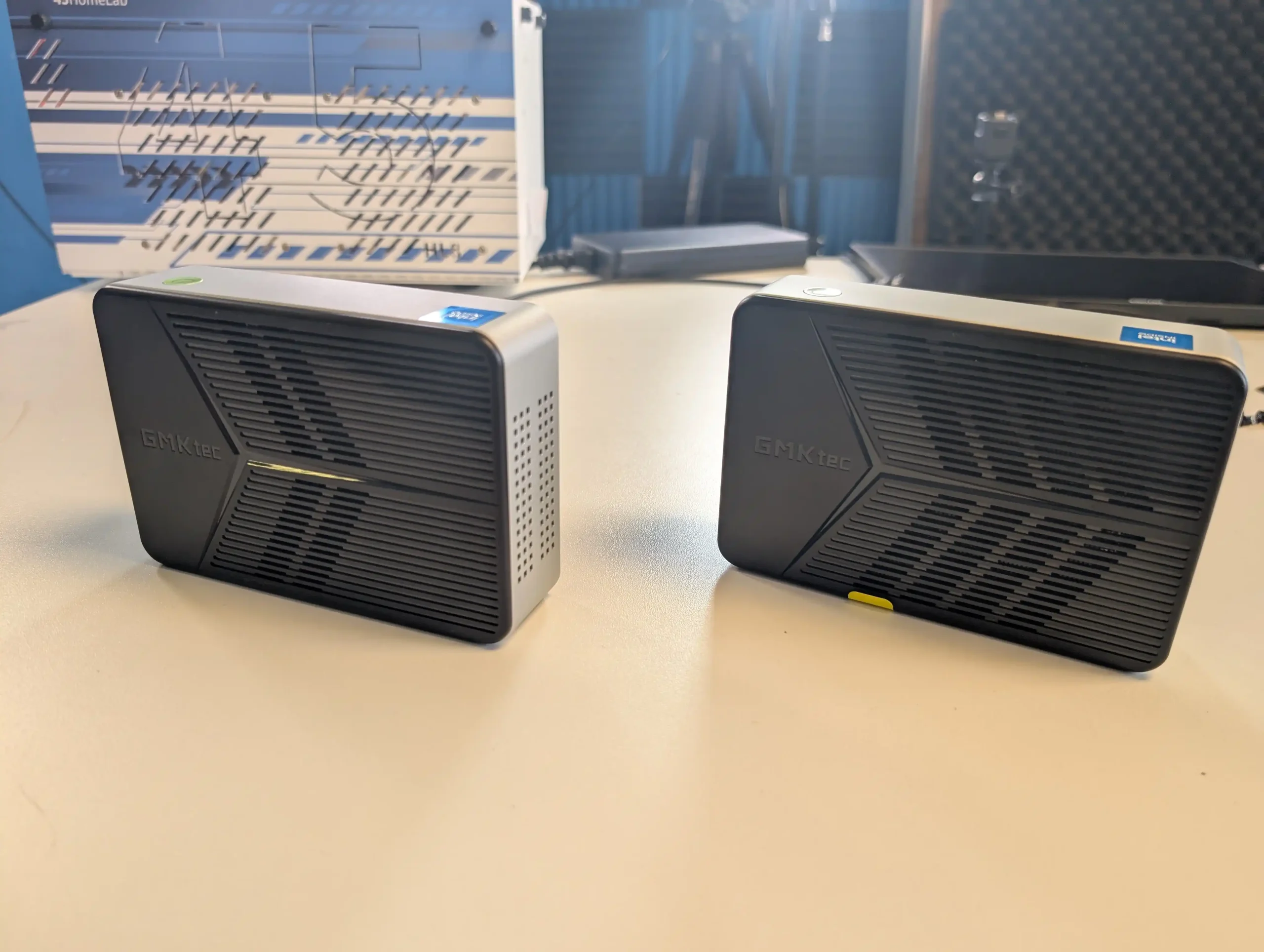
In response, GMKTec has issued an updated version of the G9 that retains the same form factor, internal hardware, and I/O but incorporates enhanced passive ventilation on the side and top panels. Though subtle at first glance, these structural changes are designed to improve airflow over the CPU and SSD compartments without increasing noise levels or power draw. In this updated review, we will revisit all aspects of the G9’s design, connectivity, and system behaviour under continuous load, while highlighting what exactly has changed and what remains untouched. The new G9 model introduces targeted thermal improvements, but beyond ventilation, it leaves the original architecture and feature set entirely intact.

GMKTec G9 Ver.2 NAS Review – Quick Conclusion
The improved GMKTec G9 NAS represents a targeted refinement rather than a full redesign, addressing the primary weakness of the original model: inadequate thermal performance. The updated version introduces enlarged ventilation cutouts on the top panel above the CPU fan and replaces the pinhole rear exhaust with a wider mesh, leading to measurable but modest reductions in system temperatures. In 48-hour test scenarios using UnRAID with hourly backup tasks, SSDs without heatsinks in the original unit reached idle temperatures of 66–67°C, while the revised model brought this down to 56–57°C. CPU vent temperatures similarly dropped from 54–56°C to 50–52°C, and rear I/O areas cooled by 5–7°C. These improvements enhance stability during sustained I/O activity but do not eliminate the need for additional SSD cooling—particularly in environments where ambient heat or multi-user access is expected. Internally, the hardware remains unchanged: Intel N150 CPU, 12GB of non-upgradable LPDDR5 memory, four PCIe Gen 3 x2 M.2 NVMe bays, and dual 2.5GbE ports, with storage and network throughput consistent with entry-level expectations. Power consumption remains efficient (19–30W), and noise levels stay low at under 40dB, making it suitable for always-on deployment. However, the continued use of a plastic chassis and base panel still limits effective heat dissipation, and the absence of thermal sensors or fan curve controls further limits its thermal adaptability. Compared to the Xyber Hydra—featuring a metal base, better SSD thermal contact, and 16GB RAM—the G9 now performs better than before but still falls short of what its hardware could achieve with more thoughtful engineering. For users willing to invest in SSD heatsinks and mindful of its limitations, the G9 is now a reasonably balanced entry NAS, though not the strongest performer in its tier.
Where to Buy?
|
GMKTec G9 Ver.2 NAS Review – Design and Storage
The GMKTec G9 continues to use a compact, matte-black plastic chassis that is closer in design to a mini PC enclosure than a traditional NAS. The vertical design conserves desk space, and the front-facing panel remains clean and understated, with no visible drive trays or status indicators beyond the power button and basic branding. As with the original model, the chassis sacrifices the durability and thermal advantages of metal in favour of a lightweight, cost-efficient build. This makes the device appealing for users with space constraints, but it also signals the system’s budget positioning. The plastic enclosure, while solid enough for day-to-day use, is not especially resistant to heat buildup during sustained I/O operations, which remains one of its most persistent limitations.
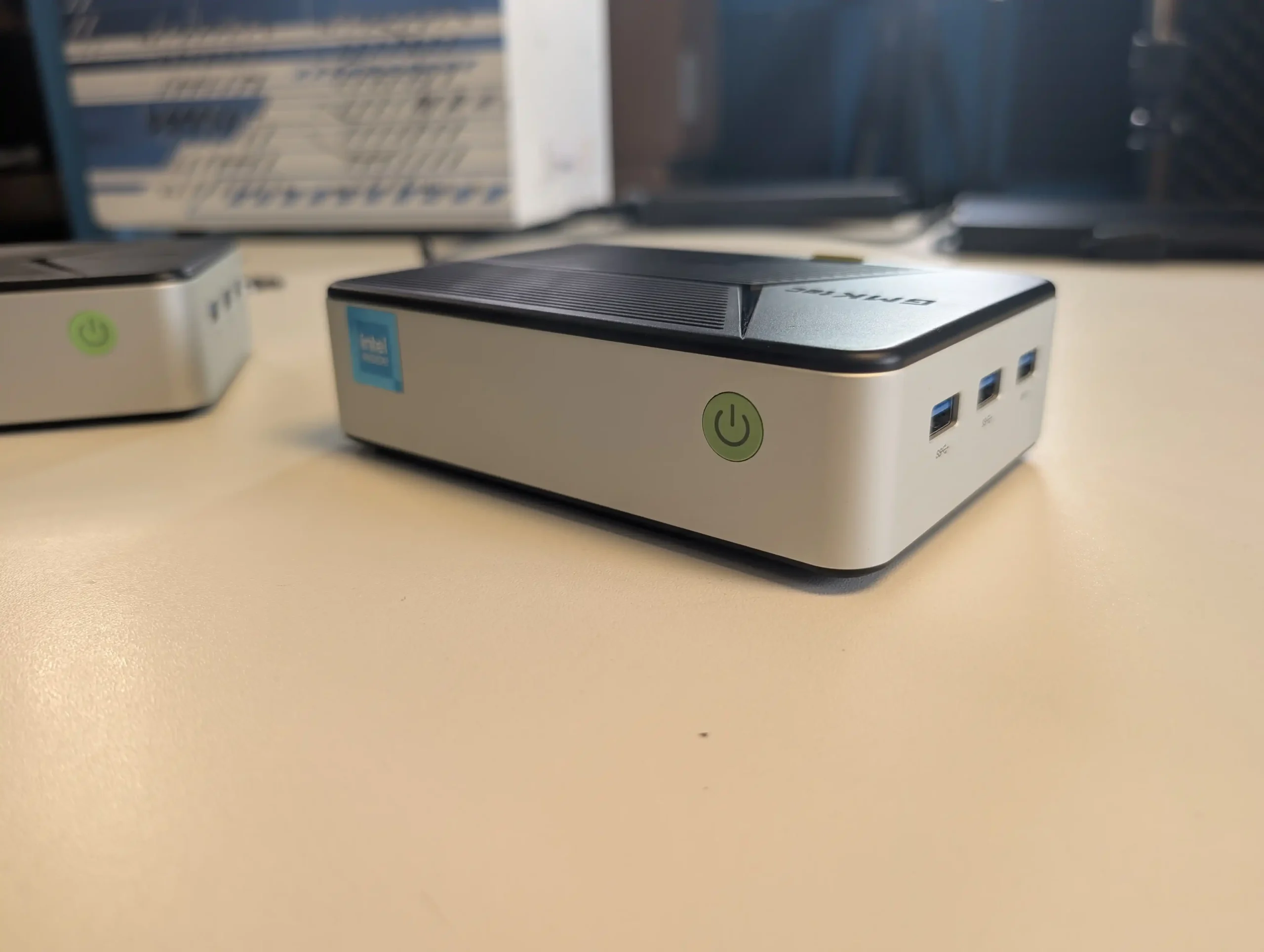
Internally, the system supports four M.2 NVMe SSDs, each connected via PCIe Gen 3 x2 lanes. This setup allows up to 32TB of total SSD storage, assuming the use of high-capacity 8TB NVMe drives. The use of SSDs rather than traditional 2.5″ or 3.5″ hard drives enables near-silent operation, faster access times, and lower power consumption. However, SSD-only NAS designs like this one typically require better airflow and heatsinking to mitigate thermal throttling—especially during RAID operations or when used as a media server with multiple concurrent reads and writes. The G9 supports basic RAID via third-party NAS OSs, but due to PCIe lane limitations and lack of onboard RAID management, advanced configurations will rely entirely on software.
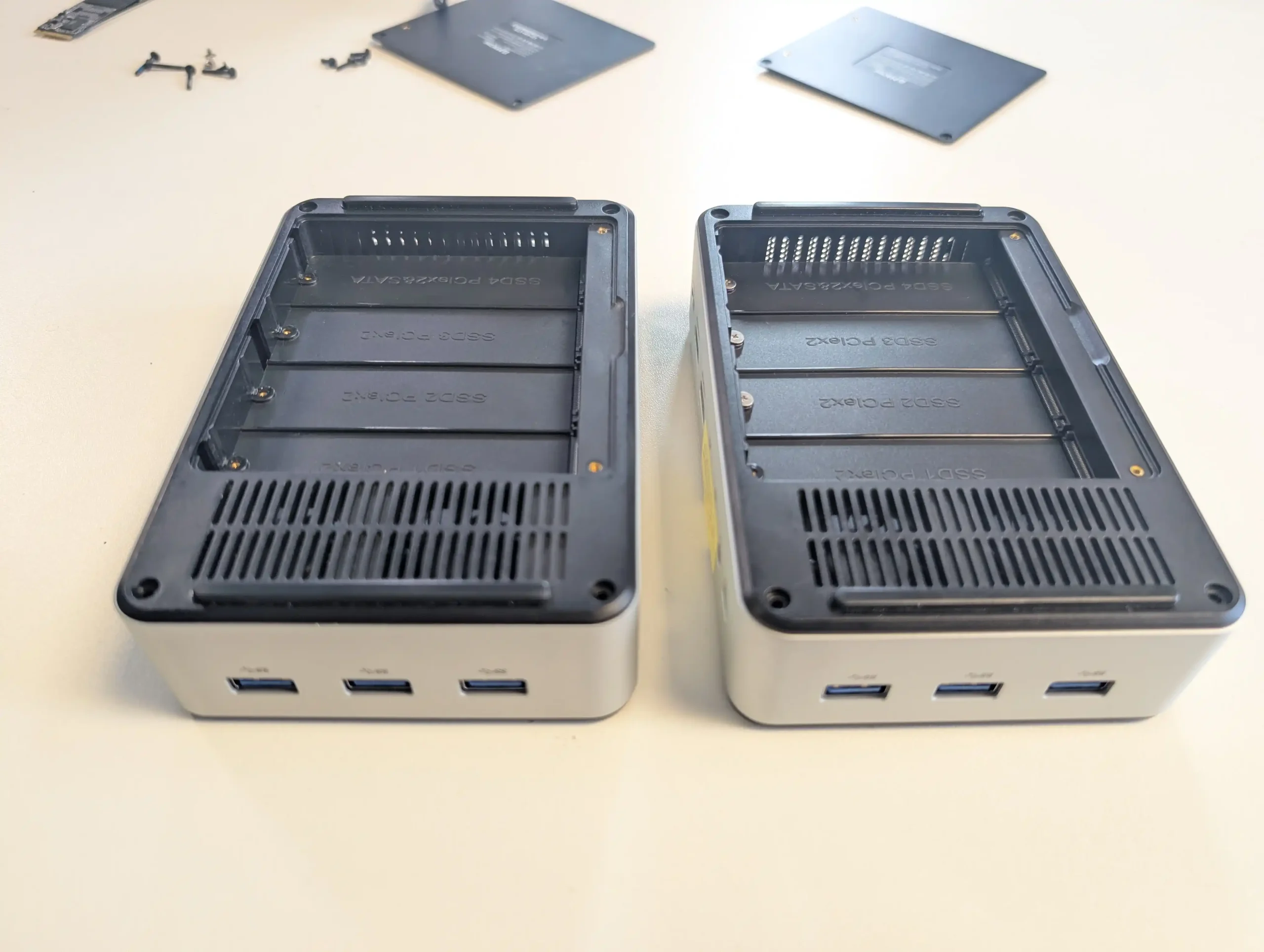
One of the primary complaints in the original model was the absence of SSD heatsinks and the system’s poor natural heat dissipation. While pre-built units from GMKTec occasionally shipped with low-profile aluminum heatsinks, user-added drives often ran hot, especially under sustained write loads. The M.2 slots sit stacked vertically inside a cramped compartment behind the lower rear panel, and when combined with a sealed plastic baseplate, heat quickly accumulates. This design still persists in the new version, and although airflow has been improved through the external vents, the interior thermal behaviour remains heavily dependent on user-supplied heatsinks and ambient cooling conditions. Users deploying high-endurance SSDs or running frequent write-intensive tasks will need to factor this into their thermal strategy.
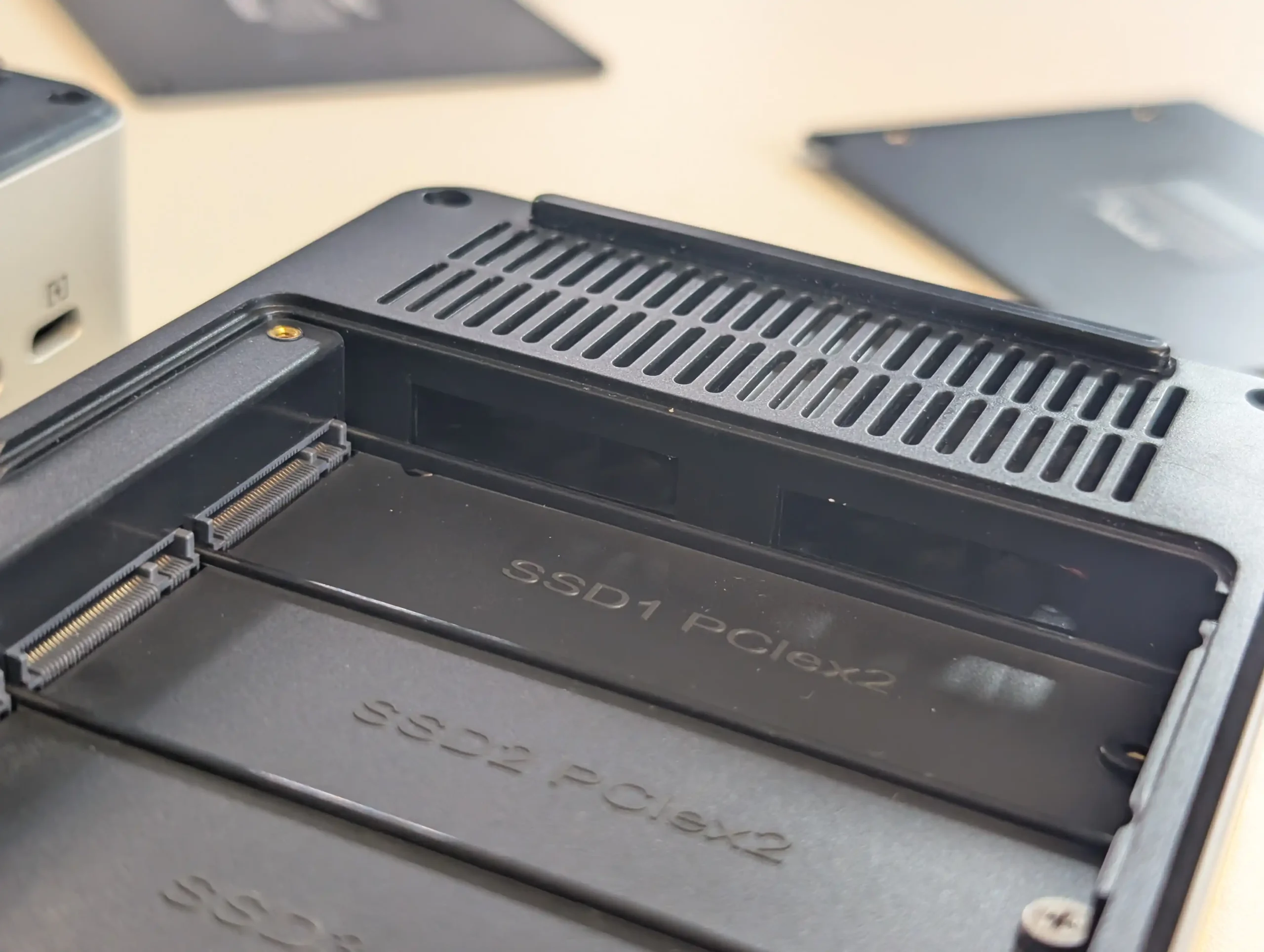
The internal layout is efficient but fixed. There are no modular trays or hot-swap capabilities for the SSDs, and all upgrades must be performed by opening the device. Memory is soldered and therefore non-upgradable, and while there’s internal eMMC storage used for the pre-installed OS, most users will opt to install TrueNAS, UnRAID, or OpenMediaVault onto one of the NVMe drives for full NAS functionality. The passive cooling approach is unchanged in its core design: two internal fans (one for CPU, one system) move air through the case, but without direct thermal contact to the SSDs or a conductive enclosure material, this airflow has limited reach. Placement of the unit in a well-ventilated space remains essential.
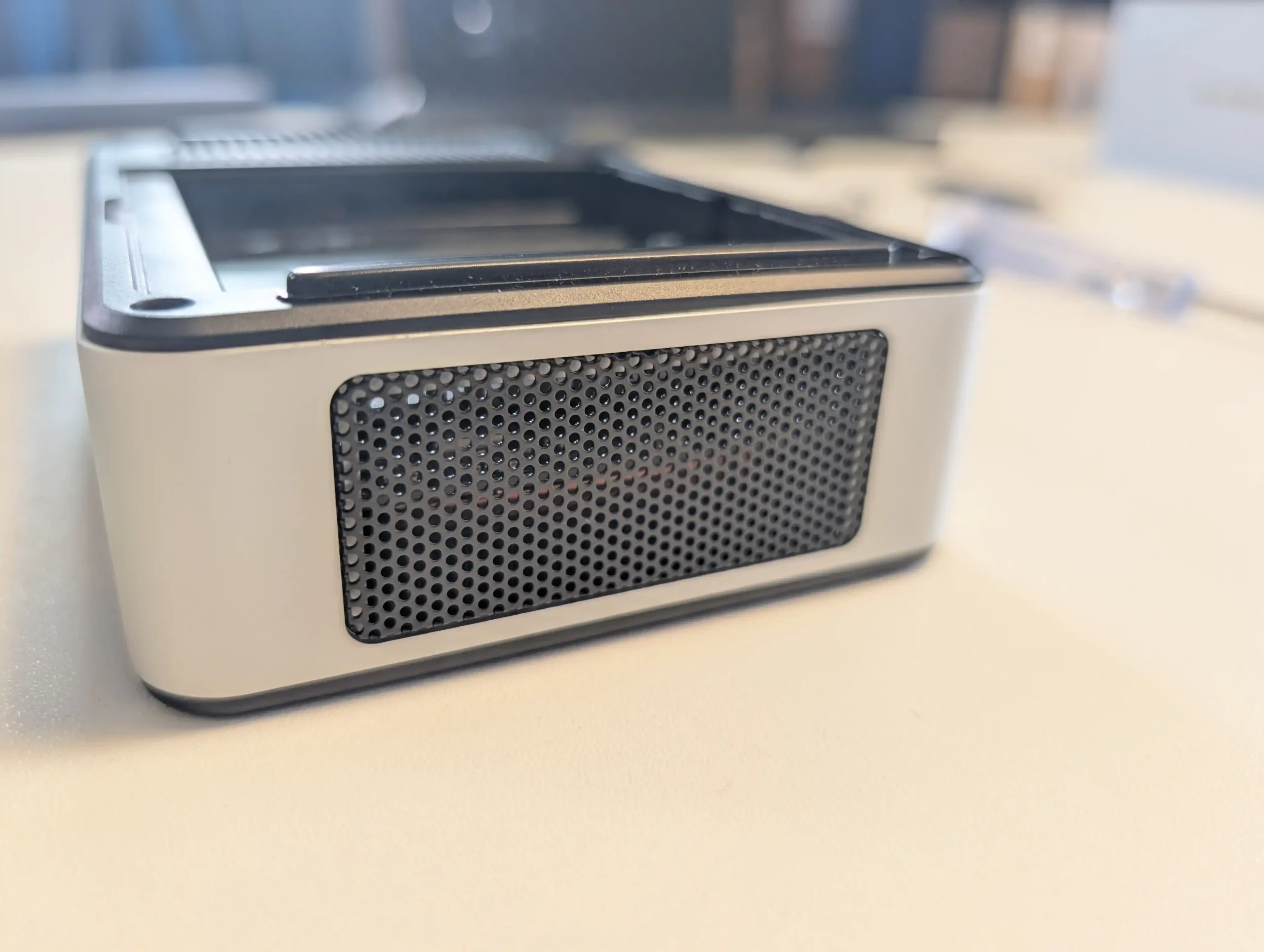
The only real physical design changes in the new version are to the external ventilation panels. GMKTec has replaced the original pinhole-style vent on the rear side with a wider mesh grille, which now spans a greater portion of the side panel. Additionally, the top panel has been revised to include a broader cutout directly above the CPU fan, allowing a clearer exhaust path for rising hot air. However, the plastic base and internal heat chamber structure remain unchanged, meaning SSD temperatures are still a potential concern—especially without aftermarket cooling. The updated G9 retains the same core storage architecture as the original, but introduces modest improvements to airflow via enhanced external ventilation.
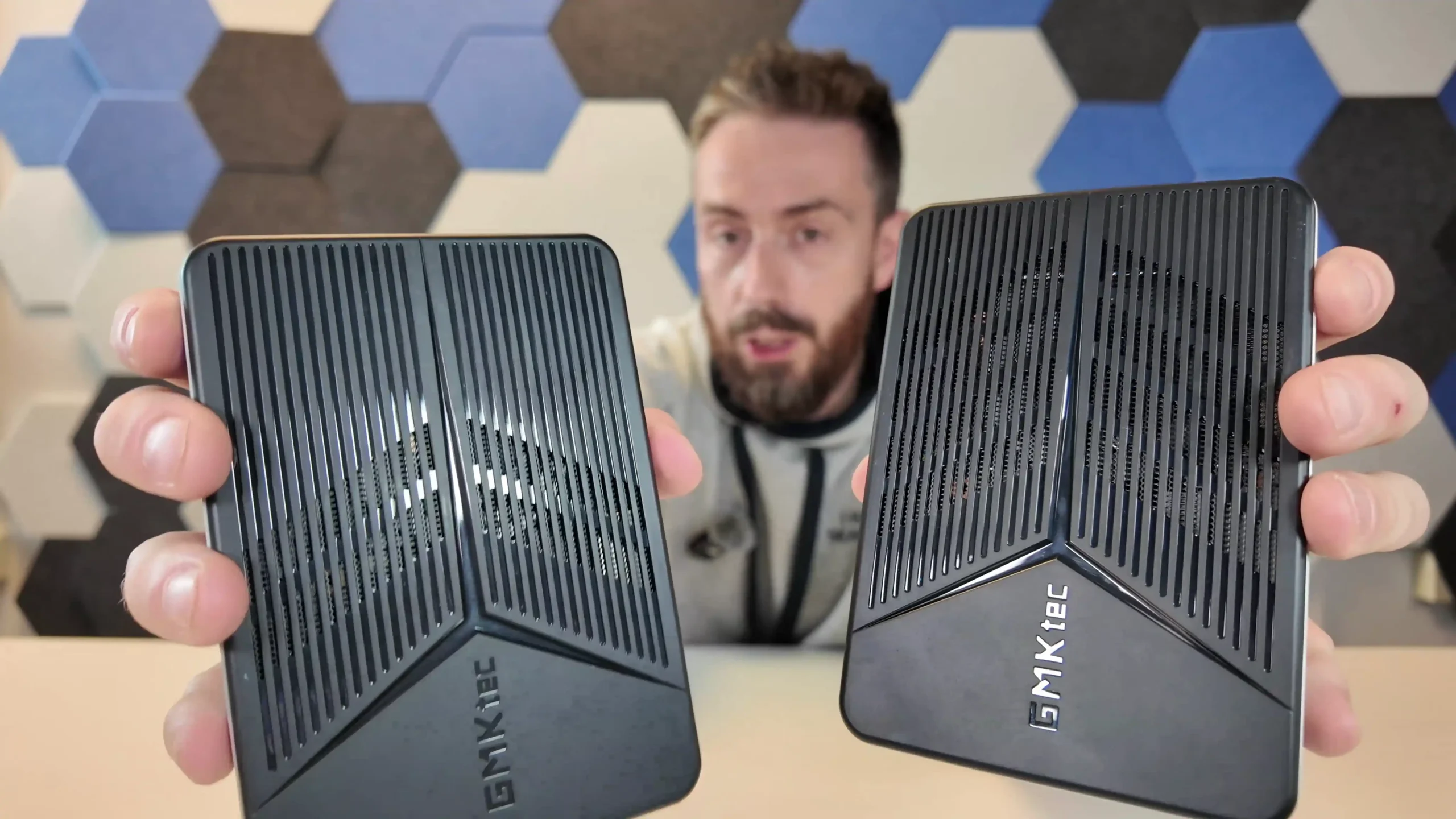
GMKTec G9 Ver.2 NAS Review – Internal Hardware
At the center of the GMKTec G9 is the Intel N150 processor, a quad-core, four-thread CPU built on the 10nm Twice Lake architecture. Designed for ultra-efficient computing, it operates at a modest 6W TDP, making it ideal for passive or semi-passive cooling environments like compact NAS systems. The N150 runs at a 1.0GHz base frequency and boosts up to 3.6GHz under load, delivering just enough headroom for tasks like SMB/NFS sharing, low-volume web hosting, and basic media playback. Its integrated Intel UHD Graphics support up to 4K at 60Hz output via HDMI or USB-C DisplayPort alt mode, though without hardware acceleration for modern codecs like AV1, its suitability for on-the-fly transcoding is limited. The CPU also lacks advanced server-grade features like ECC memory support, SR-IOV, or high-bandwidth PCIe 4.0 lanes, which reflects its role in cost-conscious, entry-level applications.
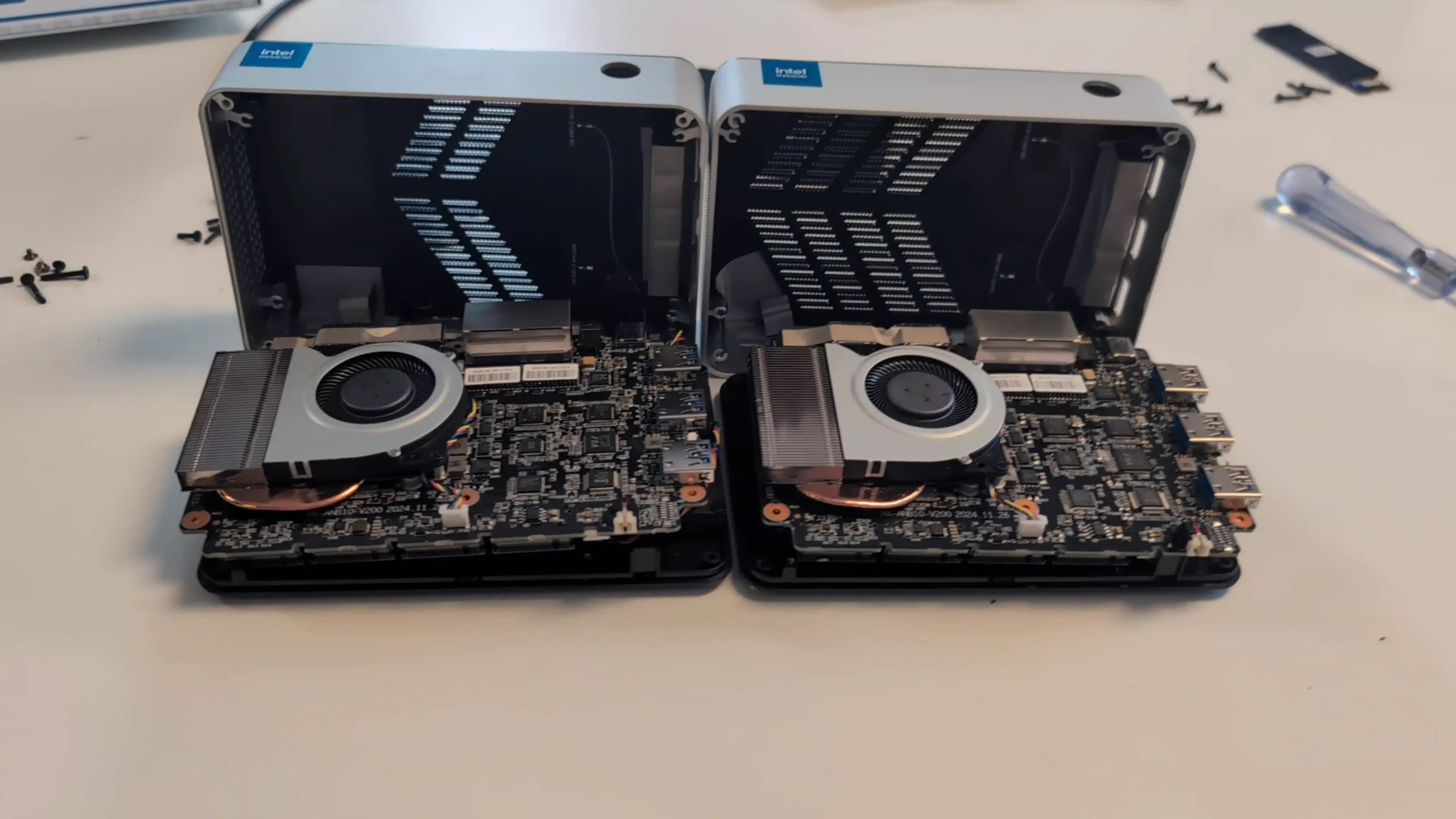
The onboard 12GB of LPDDR5-4800 memory is soldered and cannot be replaced or upgraded, a design choice that simplifies manufacturing and keeps costs down but limits versatility in heavier multitasking scenarios. In practice, the memory is sufficient for running one or two lightweight NAS services alongside file sharing, or even a basic Docker container or two, but its soldered configuration leaves no room for future expansion. Notably, the memory is dual-channel, which does help offset some performance constraints—especially in scenarios where the integrated graphics or CPU requires memory bandwidth access. While most users won’t hit the ceiling of 12GB under standard NAS tasks, advanced setups involving active sync with cloud platforms, large-scale Plex libraries, or multiple concurrent rsync/FTP sessions could find the limitation restrictive. Also, unlike some similarly priced competitors, there’s no accessible BIOS option to reserve RAM for cache acceleration, which could have improved responsiveness under heavier I/O loads.
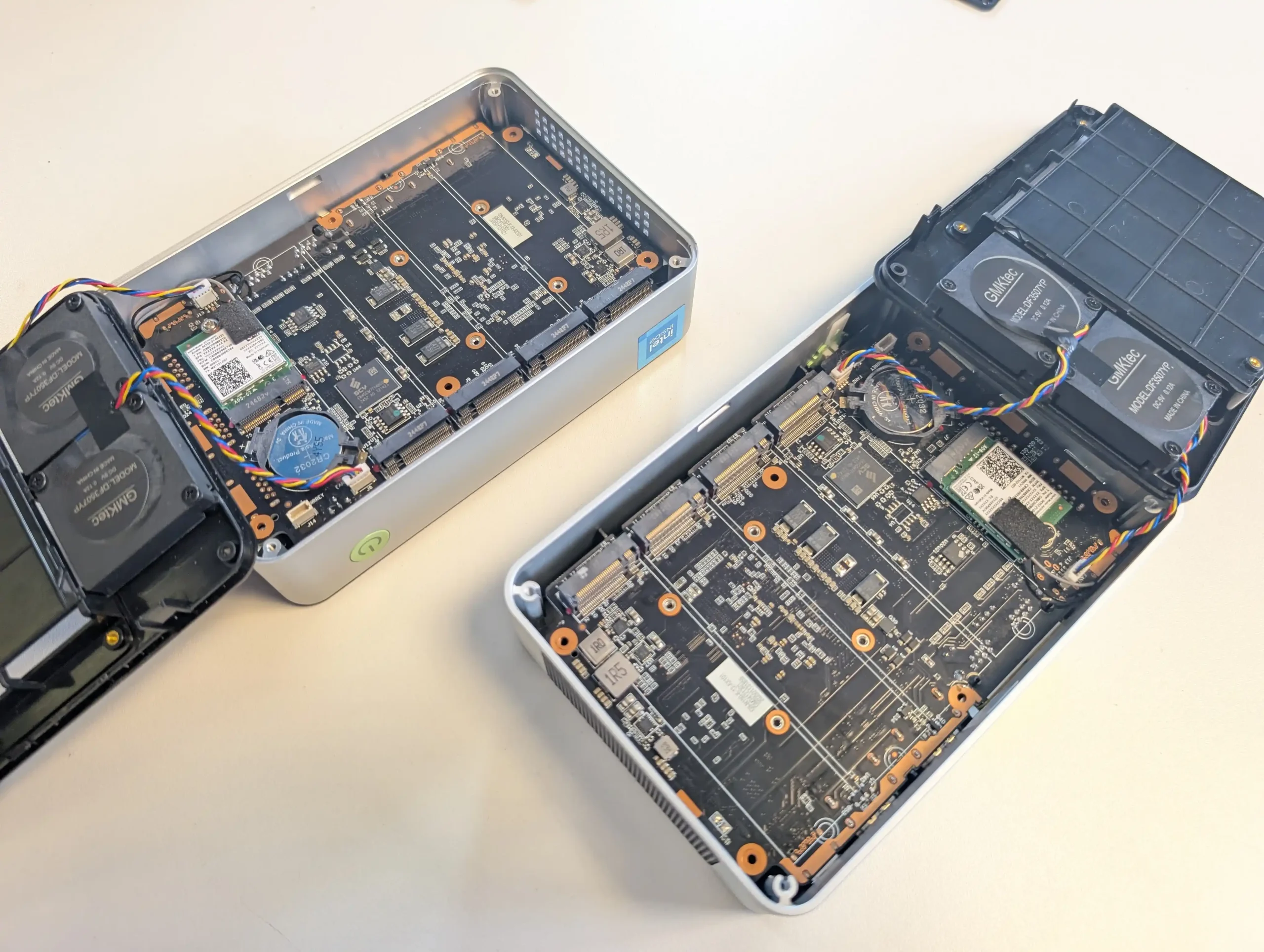
In terms of storage hardware, the G9 offers four M.2 NVMe slots with PCIe Gen 3 x2 interfaces, a configuration that supports up to 32TB of total storage using current consumer-grade drives. Each slot is keyed for M-Key NVMe SSDs and arranged vertically inside the enclosure, though installation requires unscrewing the rear panel and working within the confined internal cavity. The system’s internal PCIe lane distribution is handled through multiple ASMedia ASM1182e switch chips, which divide the CPU’s limited PCIe bandwidth across all four NVMe slots and the dual 2.5GbE interfaces. While the Gen 3 x2 interface is technically capable of 2GB/s per slot, real-world speeds are often lower during concurrent access due to the shared architecture.
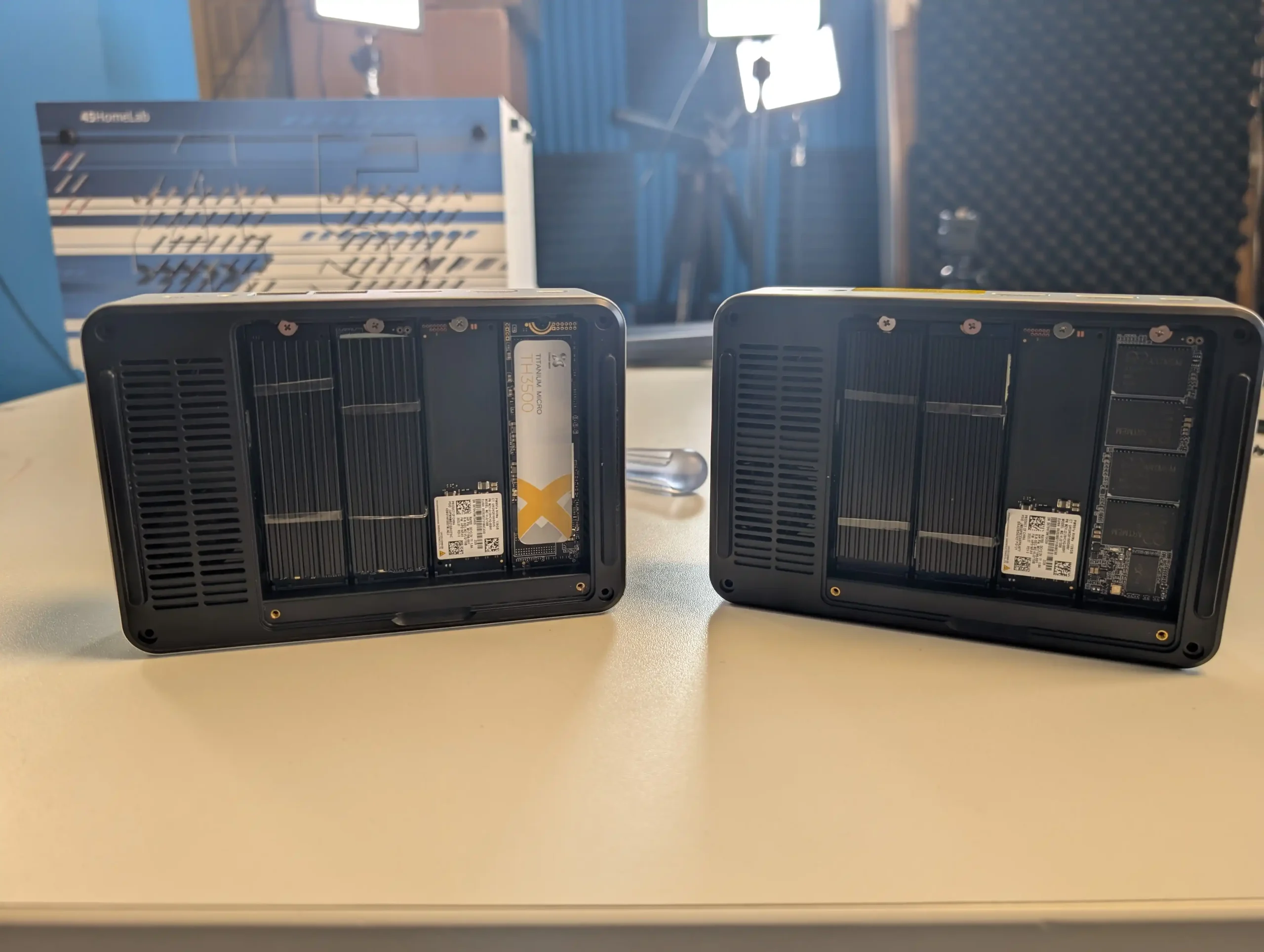
This design also limits SSD passthrough capabilities in virtualized environments, and users aiming for high-speed SSD RAID configurations (RAID 5 or 10, for example) may encounter inconsistent write speeds. Additionally, there is no hardware-level thermal throttling safeguard tied to fan curves or SSD temperature sensors, so thermal build-up under load could directly affect sustained throughput unless active cooling measures are installed. The internal hardware of the improved GMKTec G9 remains completely unchanged from the original release—no CPU, RAM, SSD slot layout, or controller chip has been altered in the updated version.
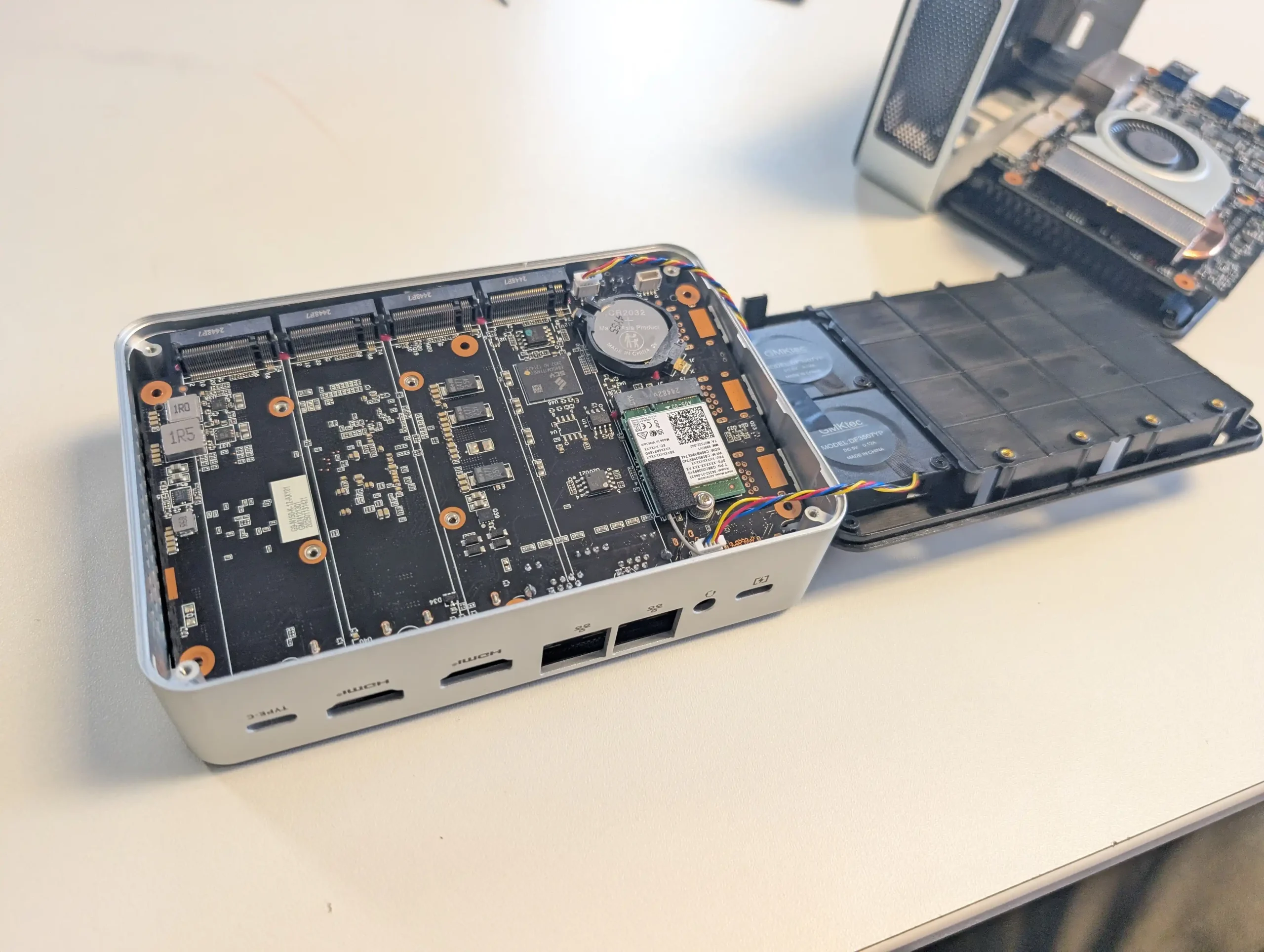
| Component | Details |
|---|---|
| CPU | Intel N150 (4 Cores / 4 Threads, 1.0–3.6GHz) |
| Architecture | Intel Twice Lake (10nm) |
| TDP | 6W |
| Memory | 12GB LPDDR5-4800 (Dual-channel, Non-upgradable) |
| Integrated Storage | 64GB eMMC (for pre-installed Windows/Ubuntu) |
| NVMe Support | 4 x M.2 NVMe SSDs (PCIe Gen 3 x2 interface) |
| Max Storage | Up to 32TB (with 4 x 8TB drives) |
| Graphics | Intel UHD (4K @ 60Hz via HDMI & USB-C DP) |
| PCIe Management | ASMedia ASM1182e Switches (x2) |
| Other Features | AES-NI, VT-x, VT-d, Speed Shift, ACPI 6.2 |
GMKTec G9 Ver.2 NAS Review – Ports and Connections
The GMKTec G9 offers a well-rounded I/O configuration that reflects its hybrid role as both a compact NAS and lightweight desktop appliance. It features two 2.5GbE LAN ports, both of which are directly linked to the CPU via PCIe lanes and can be configured for link aggregation, failover, or isolated network segments. In real-world testing, these ports easily saturate their 312MB/s bandwidth under SMB and iSCSI workloads, making the G9 more capable than traditional Gigabit NAS units. The absence of 10GbE is notable, especially for users planning to deploy NVMe RAID arrays or work in content-heavy environments, but at this price point and power envelope, dual 2.5GbE is still a competitive offering. Notably, both NICs support Wake-on-LAN (WoL), making the system convenient for remote access or low-power automation setups.
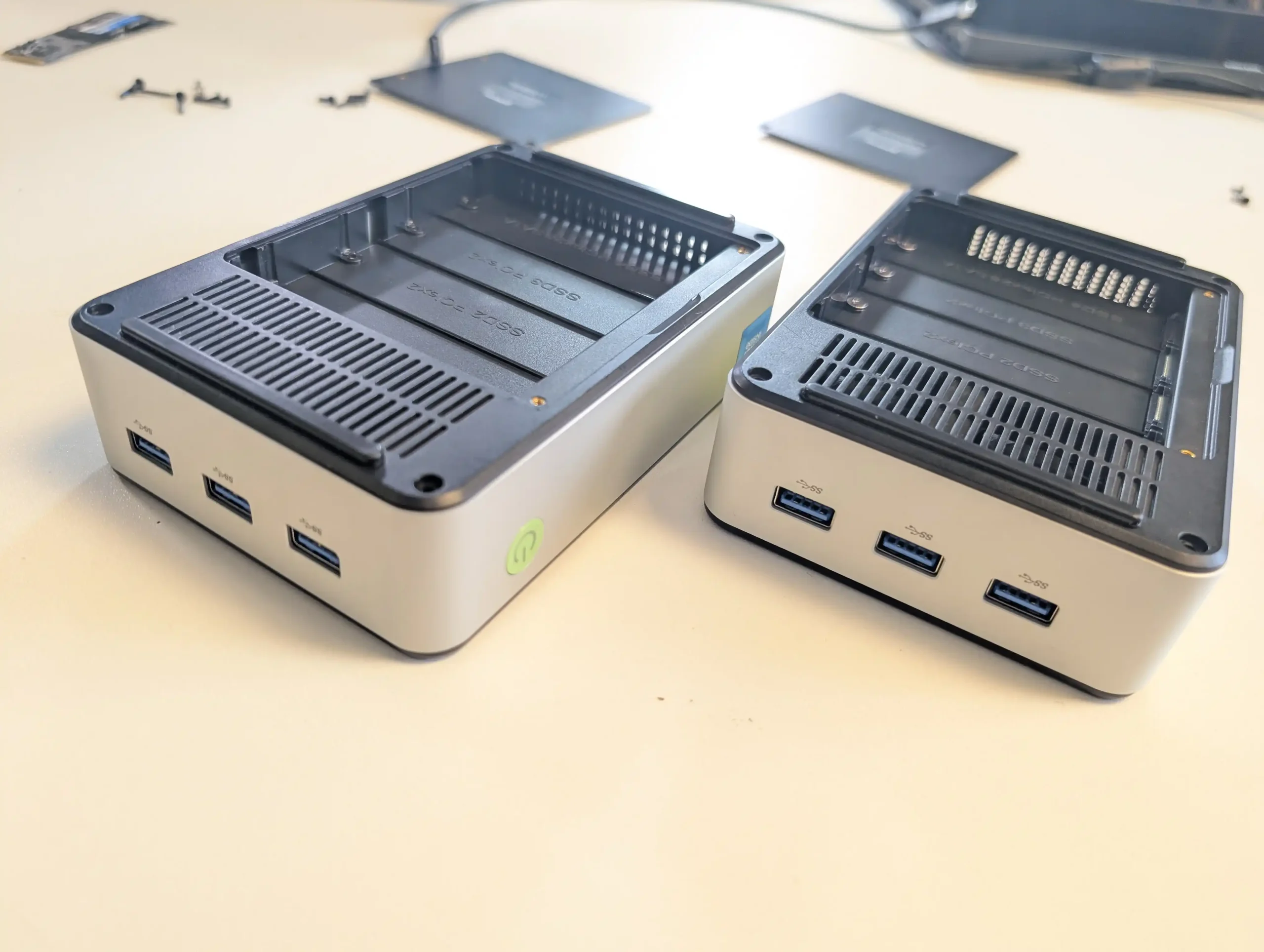
For peripheral and expansion support, the G9 includes three USB-A 3.2 Gen 2 ports and a single USB-C 3.2 Gen 2 port, each capable of 10Gbps data transfer. The USB-C port also supports DisplayPort Alt Mode, allowing it to function as an additional video output alongside the two HDMI 2.0 ports on the rear panel. These HDMI ports support 4K resolution at 60Hz and are positioned for users who may wish to operate the G9 as a silent desktop system or a local media playback device via Kodi, Jellyfin, or Plex. However, the G9 does not include USB 4.0, Thunderbolt, or PCIe expandability, limiting options for future upgrades such as external GPUs, additional NICs, or DAS enclosures. In testing, connected peripherals such as USB drives and webcams were recognized instantly under Ubuntu and Windows, confirming basic plug-and-play compatibility.
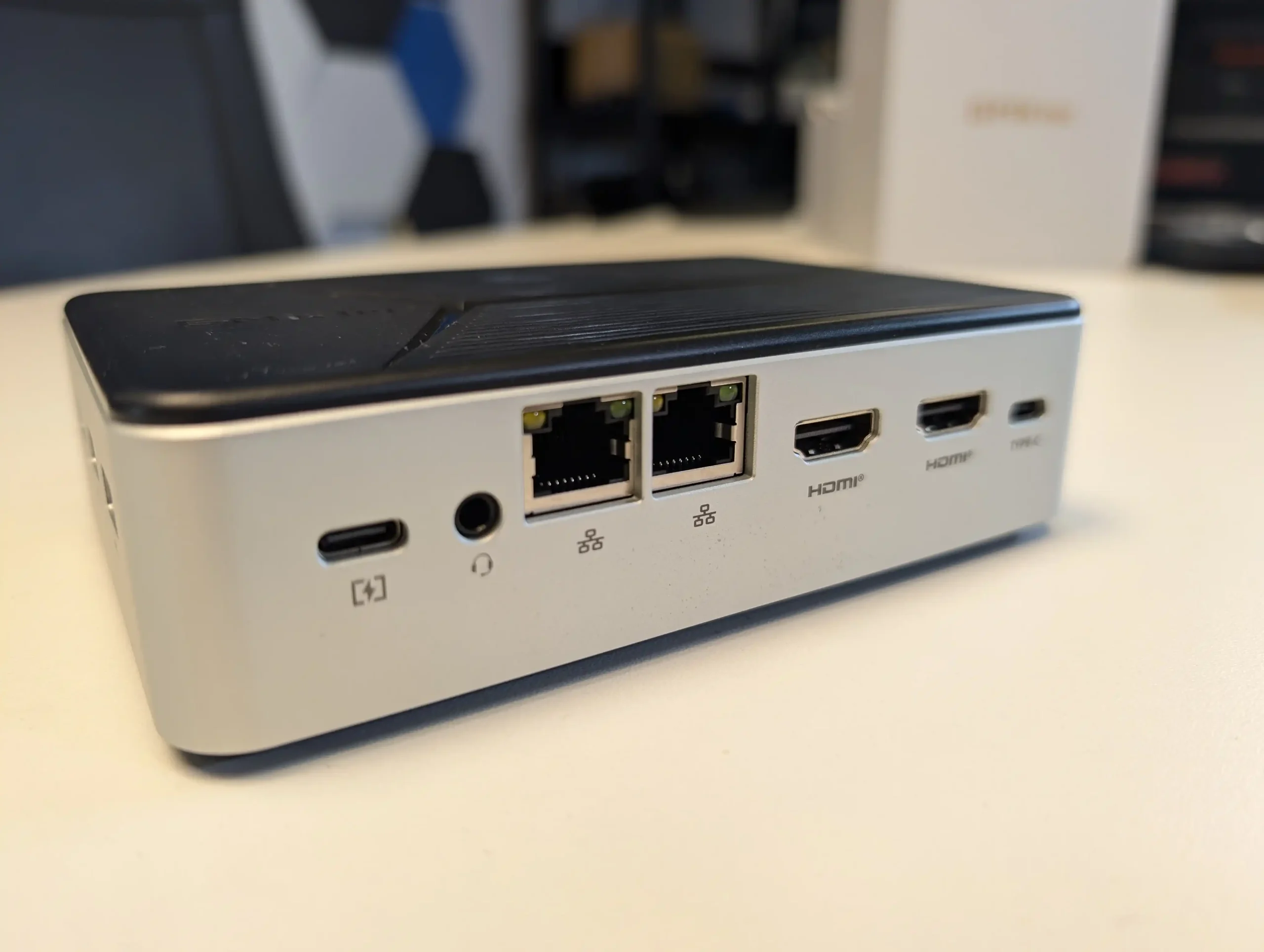
Power delivery is handled via USB-C PD input, using a 65W external power brick that ships with the unit. Uniquely, the updated G9 introduces a small but notable change: dual USB-C power input points, allowing users to select which side of the device receives the power cable. This change doesn’t increase power capacity or enable redundancy, but it can improve cable management depending on the G9’s orientation on a desk or shelf. However, using one of the USB-C ports for power inherently sacrifices a high-speed data port—an unfortunate trade-off given the unit’s lack of PCIe or expansion bays. No dedicated power switch is present; the unit powers on via the front button or Wake-on-LAN and remains always-on unless shut down via software or OS-level scripts. Compared with the original G9, the only change to I/O is the addition of the second USB-C power input for layout flexibility—otherwise, all ports, speeds, and layout remain the same.
| Port Type | Quantity | Specification |
|---|---|---|
| 2.5GbE LAN | 2 | Realtek RTL8125, Link Aggregation Supported |
| USB-A 3.2 Gen 2 | 3 | 10Gbps, Backward Compatible |
| USB-C 3.2 Gen 2 | 1 (+1 PD) | 10Gbps, DisplayPort Alt Mode |
| HDMI 2.0 | 2 | 4K @ 60Hz |
| Power Input (USB-C) | 2 | 65W USB-C PD (Only 1 used at a time) |
| Wake-on-LAN | Supported | Both NICs |
| Audio | None | No 3.5mm jack or digital out |
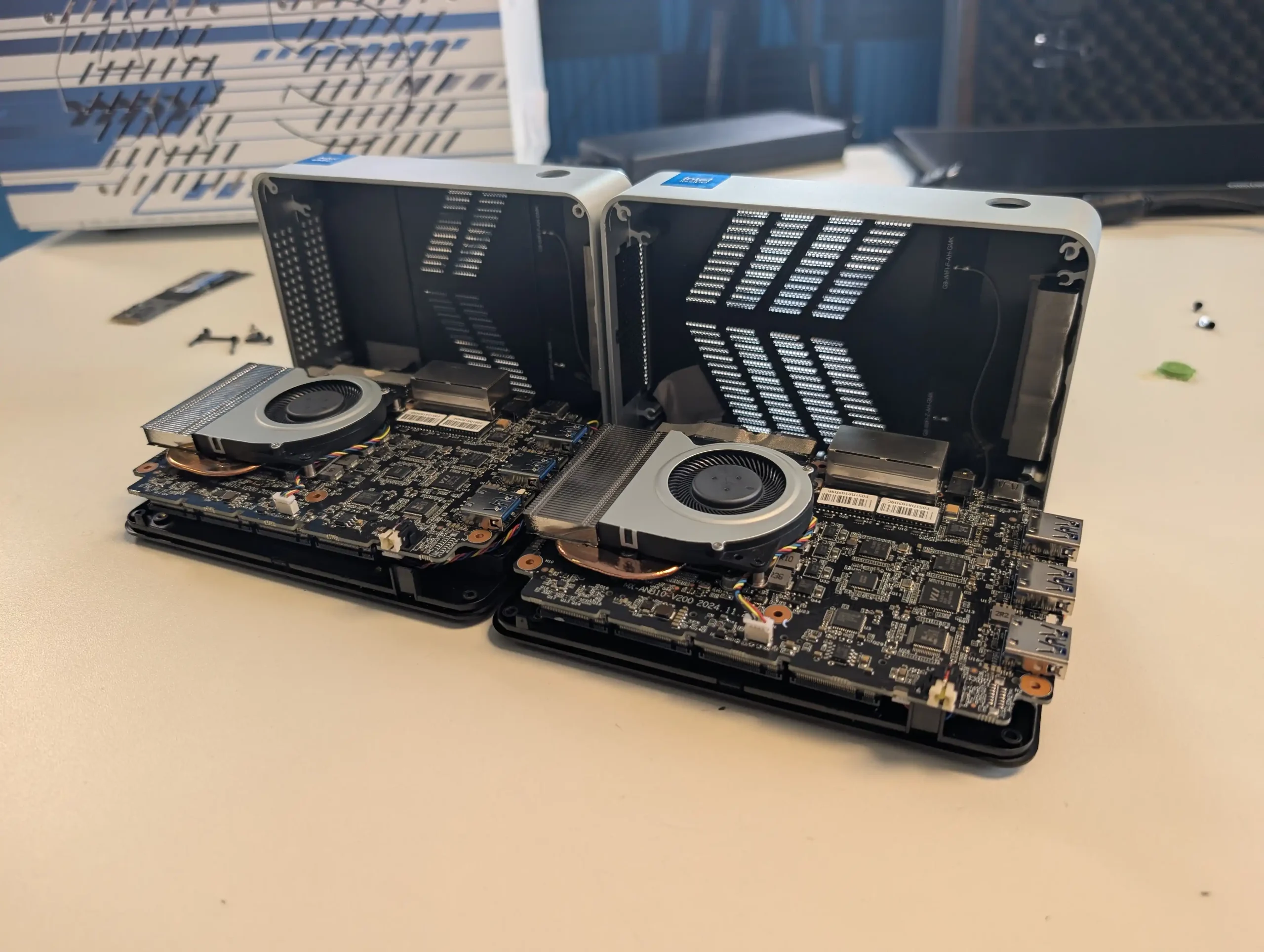
GMKTec G9 Ver.2 NAS Review – Tests and Performance
In synthetic and real-world benchmarks, the GMKTec G9 delivers the level of performance expected from an Intel N150 system with PCIe Gen 3 x2 storage. Read speeds per drive peaked around 1.4–1.5GB/s, aligning well with the theoretical limit of the x2 interface. Write speeds were notably more volatile, ranging between 400–600MB/s depending on SSD type, ambient temperature, and active processes. These numbers, while adequate for file serving, backups, and Docker apps, showed clear limitations when the system was pushed into simultaneous multi-disk writes or parity-based RAID configurations. The presence of ASMedia ASM1182e PCIe switches likely contributes to this variance, as downstream PCIe allocation under pressure introduces contention among the SSD lanes. In typical NAS tasks like SMB and NFS file transfers, however, performance remained consistent and stable, particularly when network activity was confined to single-user access or sequential transfers.
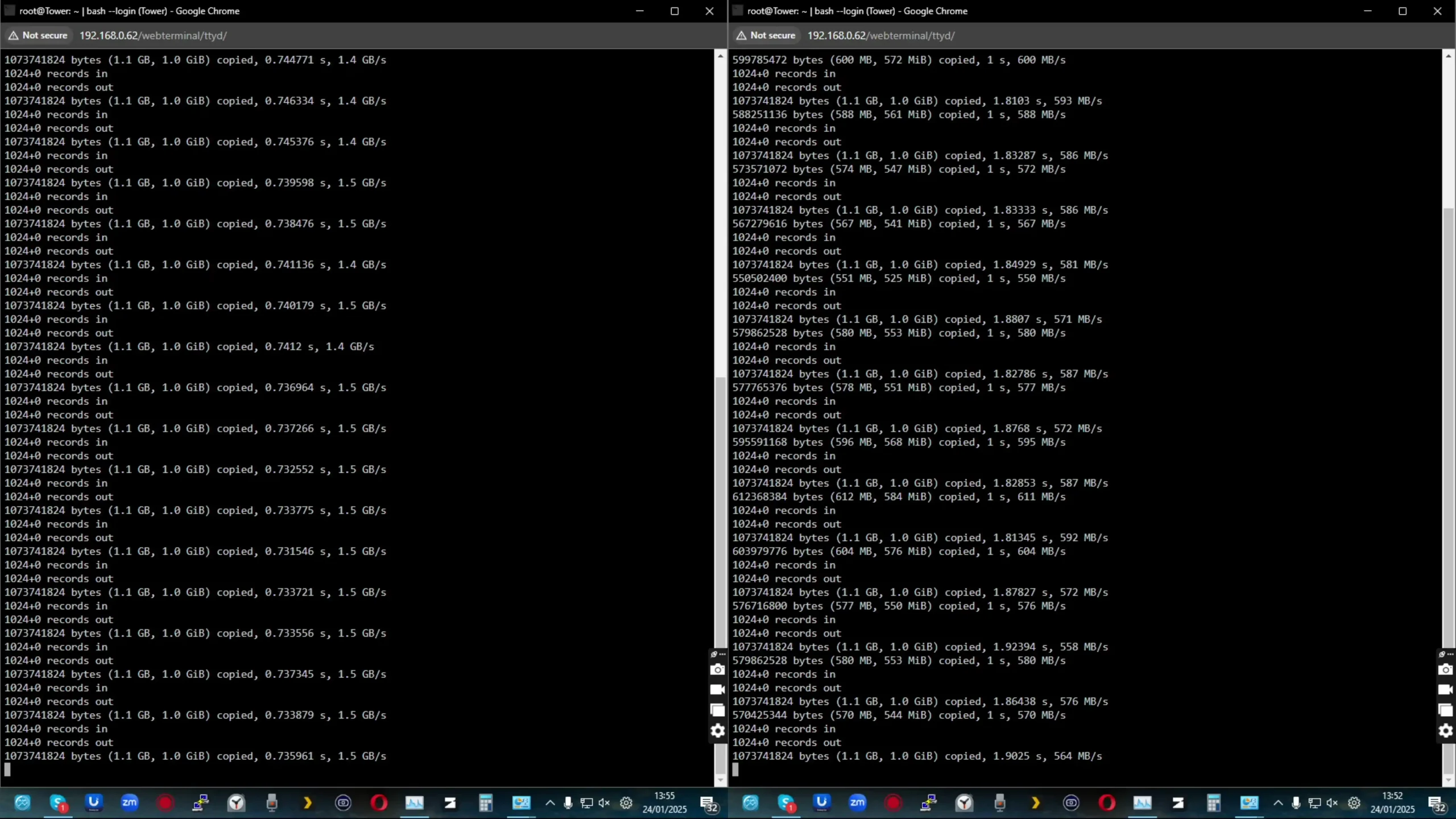
Thermal behaviour is where the most scrutiny falls, given the G9’s original design flaws. Under a controlled 48-hour test using UnRAID with scheduled hourly backups and mixed-use read/write activity, the older G9 unit routinely idled at 54–56°C, with peaks of 66–67°C on SSDs lacking heatsinks.
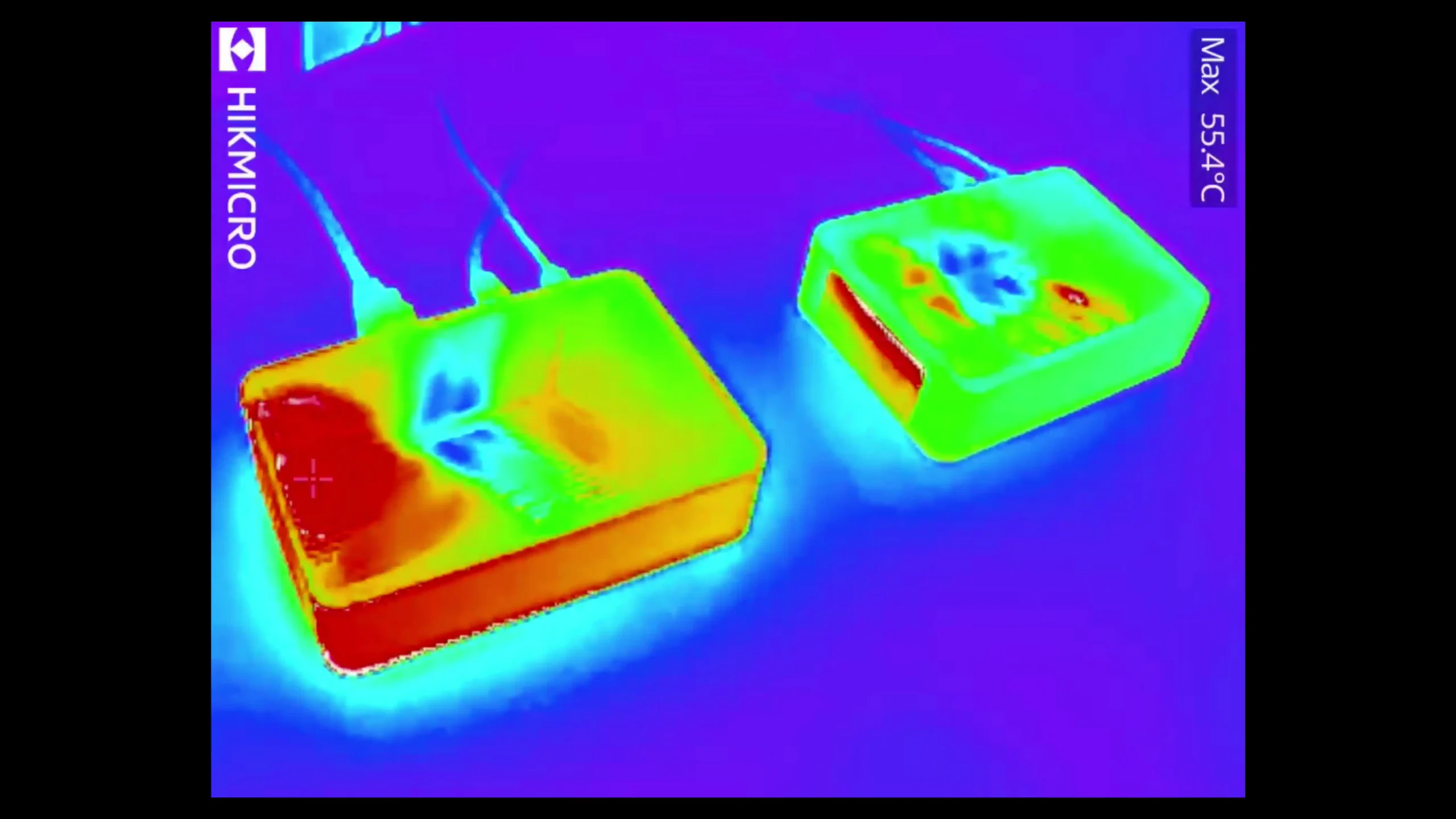
The improved model saw modest thermal gains, with idle temps reduced to 50–52°C at the CPU vent and around 56–57°C on the SSD layer. Some of this improvement came from the revised ventilation—namely the expanded top-panel fan cutout and rear-side mesh panel—yet the base remained the same thermally isolated plastic panel, and internal fan hardware remained unchanged.
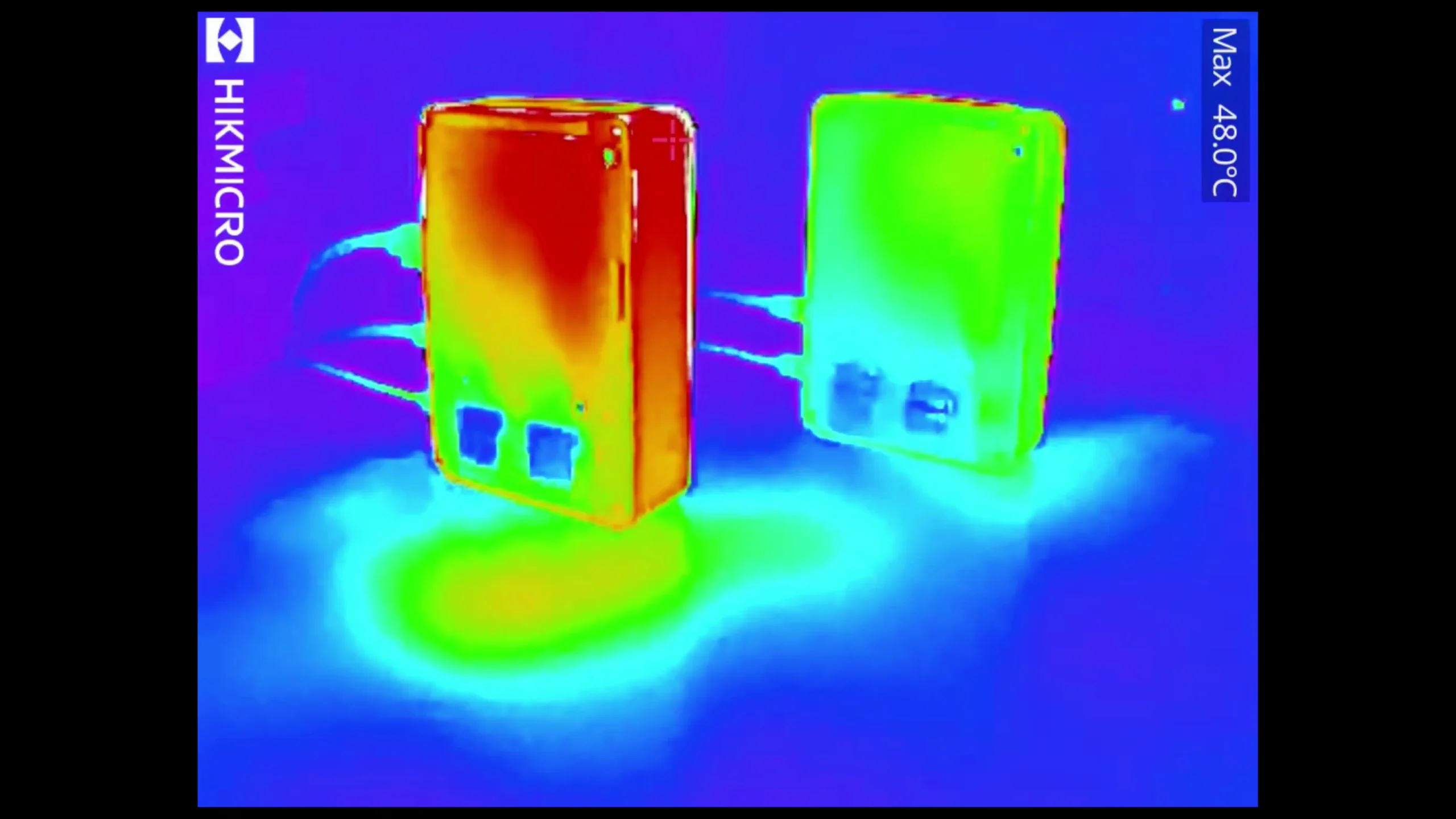
Notably, temperatures around the rear I/O ports dropped by 5–7°C between versions, suggesting that airflow efficiency around the motherboard has improved even if core thermal load remains a challenge.
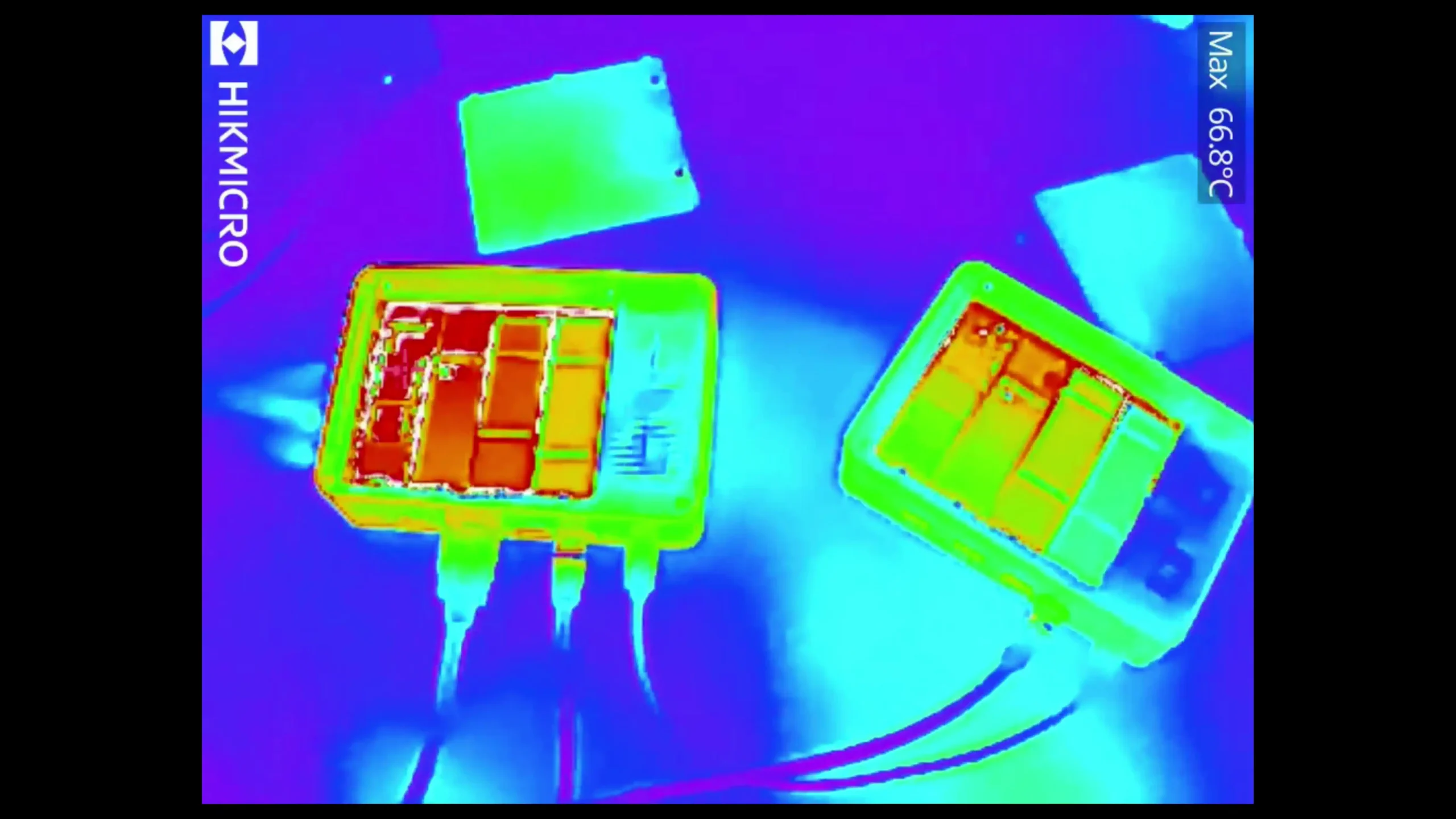
In terms of noise and power, the G9 performs admirably. Even under load, fan noise remained below 40dB, with idle operation being nearly silent. Power consumption remained within the expected range—19–21W idle and up to 30W under continuous activity—even during the 48-hour write test.
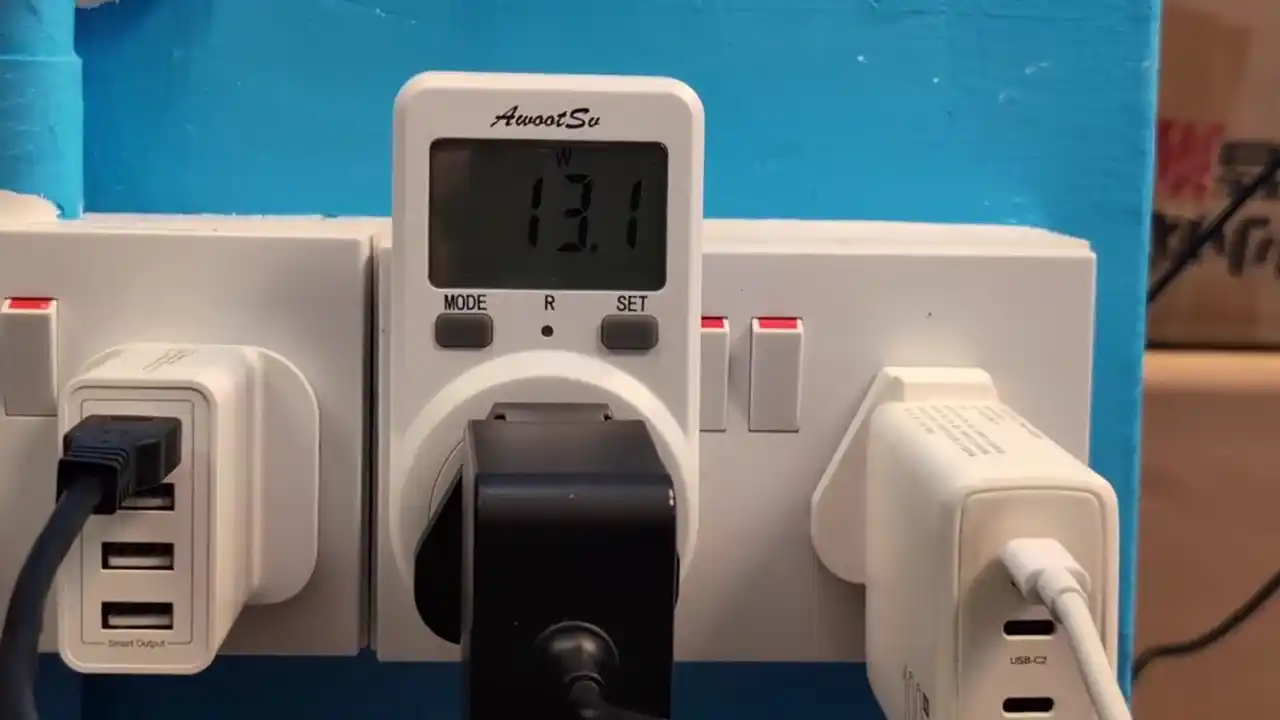 |
 |
BIOS-level tuning is possible and can slightly reduce power draw or adjust fan thresholds, but no advanced power scaling or fan curve customization is exposed via software in stock OS images. More demanding operating systems like TrueNAS Scale ran stably on the G9 but did little to mitigate thermal behaviour, reinforcing the importance of user-added SSD heatsinks regardless of OS.
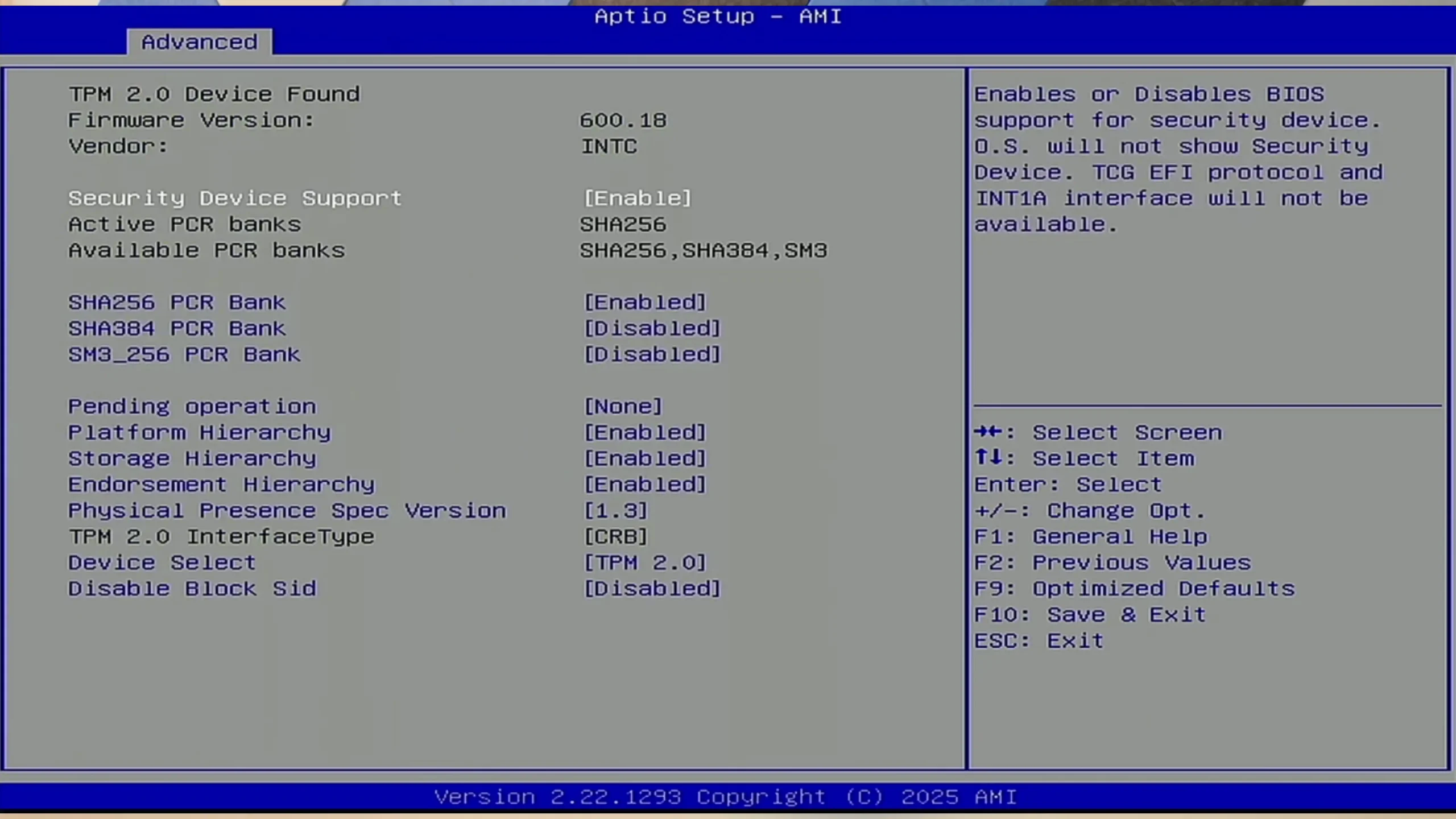
The lack of thermal sensors per SSD slot or fan feedback control means sustained operations should be closely monitored in hotter climates or enclosed environments.
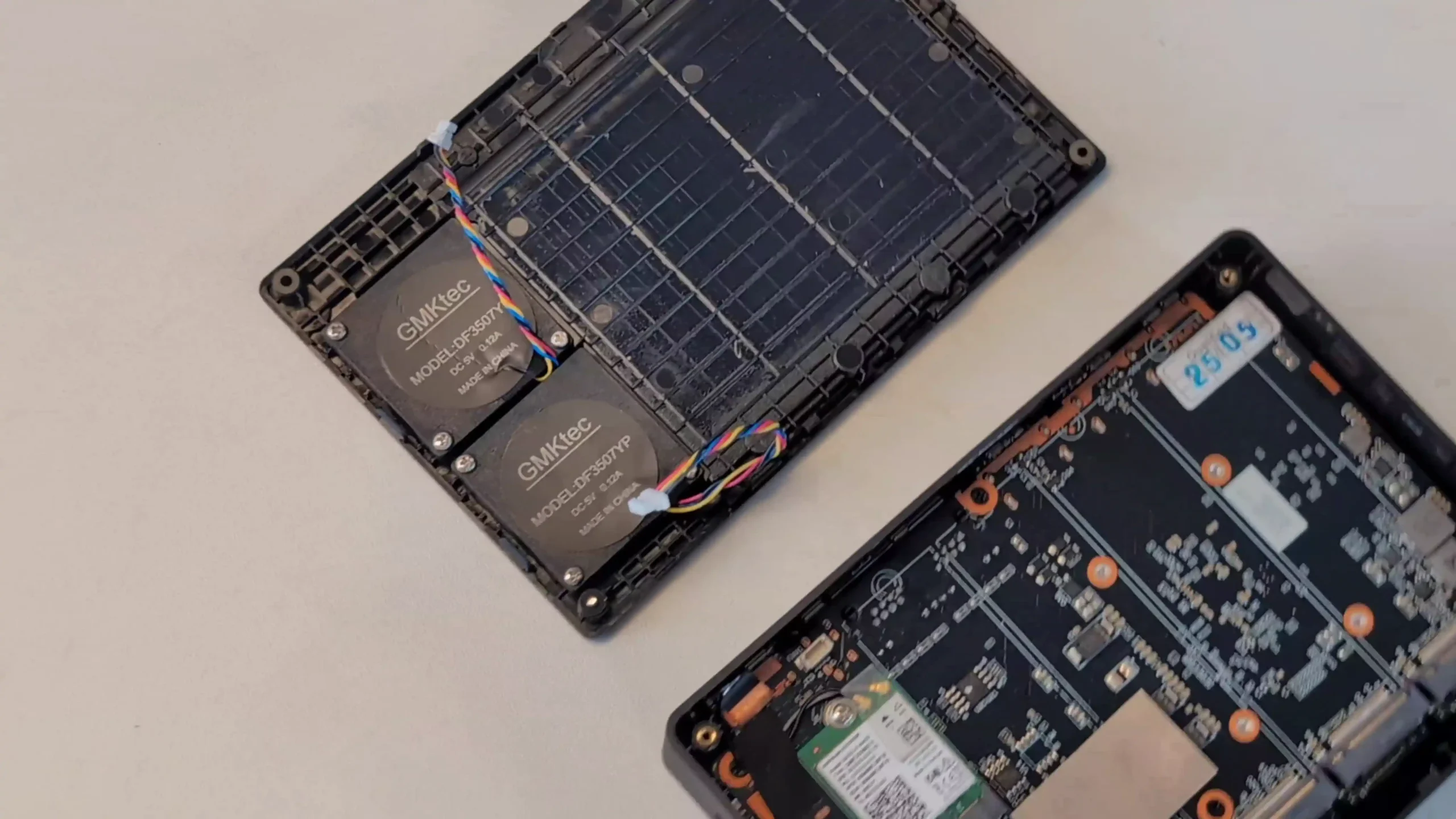
Nowhere is the conversation about thermal and hardware design more relevant than in comparison to the Xyber Hydra, a near-identical system that appears to share much of its component sourcing with the G9—right down to the GMK-branded fans. The Hydra ships with 16GB of DDR5 memory, a metal base panel, and most notably, a thermal pad that bridges SSDs to the metal shell, allowing for actual heat transfer rather than passive convection. In direct tests, the Hydra consistently posted 5–10°C lower SSD temps under identical workload, with idle SSDs (no heatsinks) registering around 47–49°C versus 56–57°C in the improved G9.
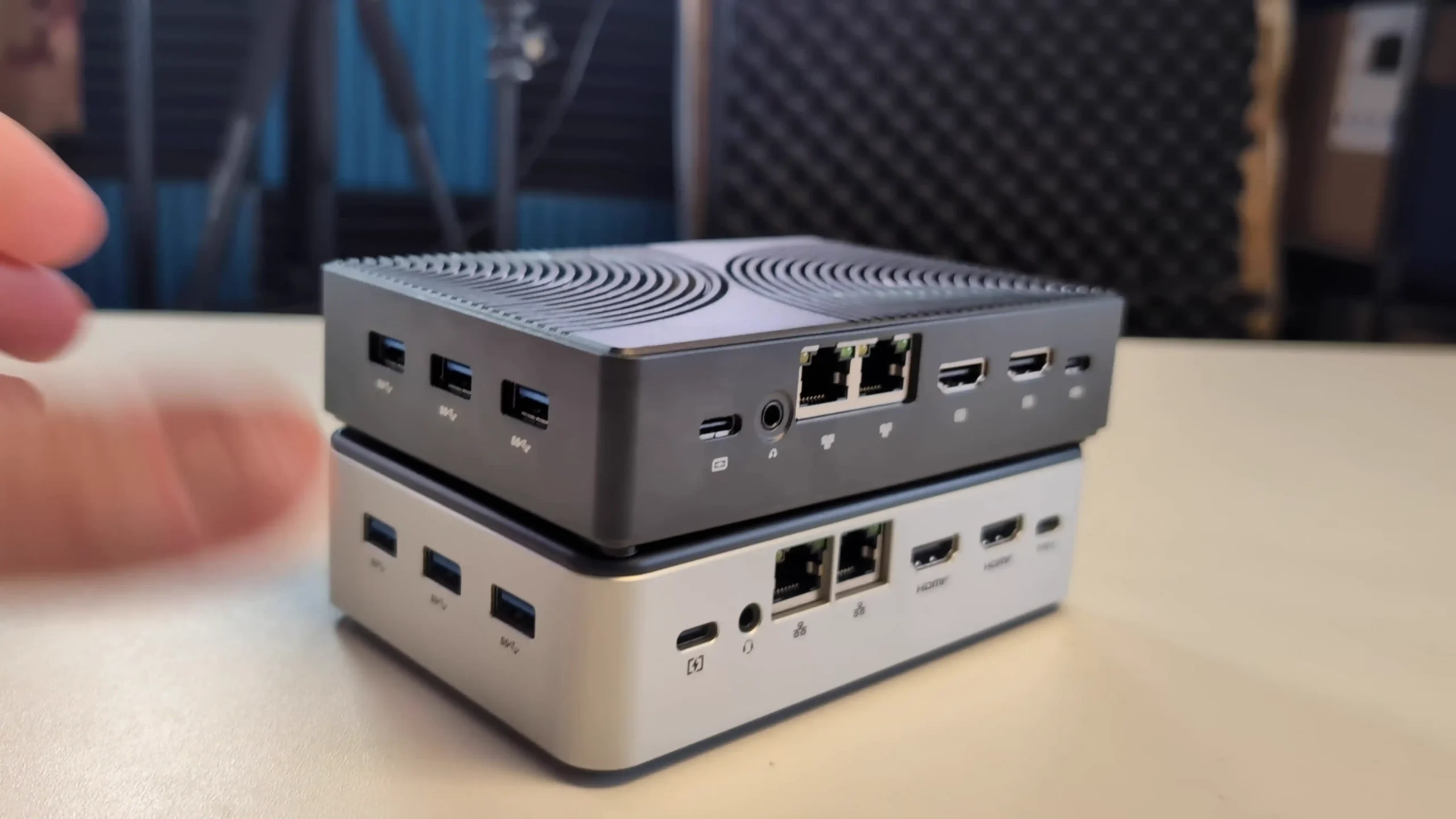
Though the Hydra lacks branding clarity around its manufacturer, the design appears to be what the G9 should have evolved into: same layout and CPU, but better thermals, more memory, and more thought put into SSD dissipation. In conclusion, while the improved GMKTec G9 offers better thermals than its predecessor, the Xyber Hydra outperforms both G9 variants in every thermal category, making it the superior choice if cooling and memory capacity are priorities.
| Metric | Original G9 | Improved G9 | Xyber Hydra |
|---|---|---|---|
| Peak Read Speed (NVMe) | ~1.4–1.5 GB/s | Same | Same |
| Sustained Write Speed | ~400–500 MB/s | Slightly higher | Slightly higher |
| Idle CPU Vent Temp | 54–56°C | 50–52°C | 47–49°C |
| SSD Temps (No Heatsink) | 66–67°C | 56–57°C | 47–49°C |
| Rear I/O Temp | 55–57°C | 48–50°C | 44–46°C |
| Power Usage (Idle/Load) | 19W / 30W | 19–21W / 30W | 18W / 28W |
| Noise Level (Max) | ~39–40dB | Same | Slightly lower |
| Thermal Pad/Metal Contact | None | None | Yes (Metal Base) |
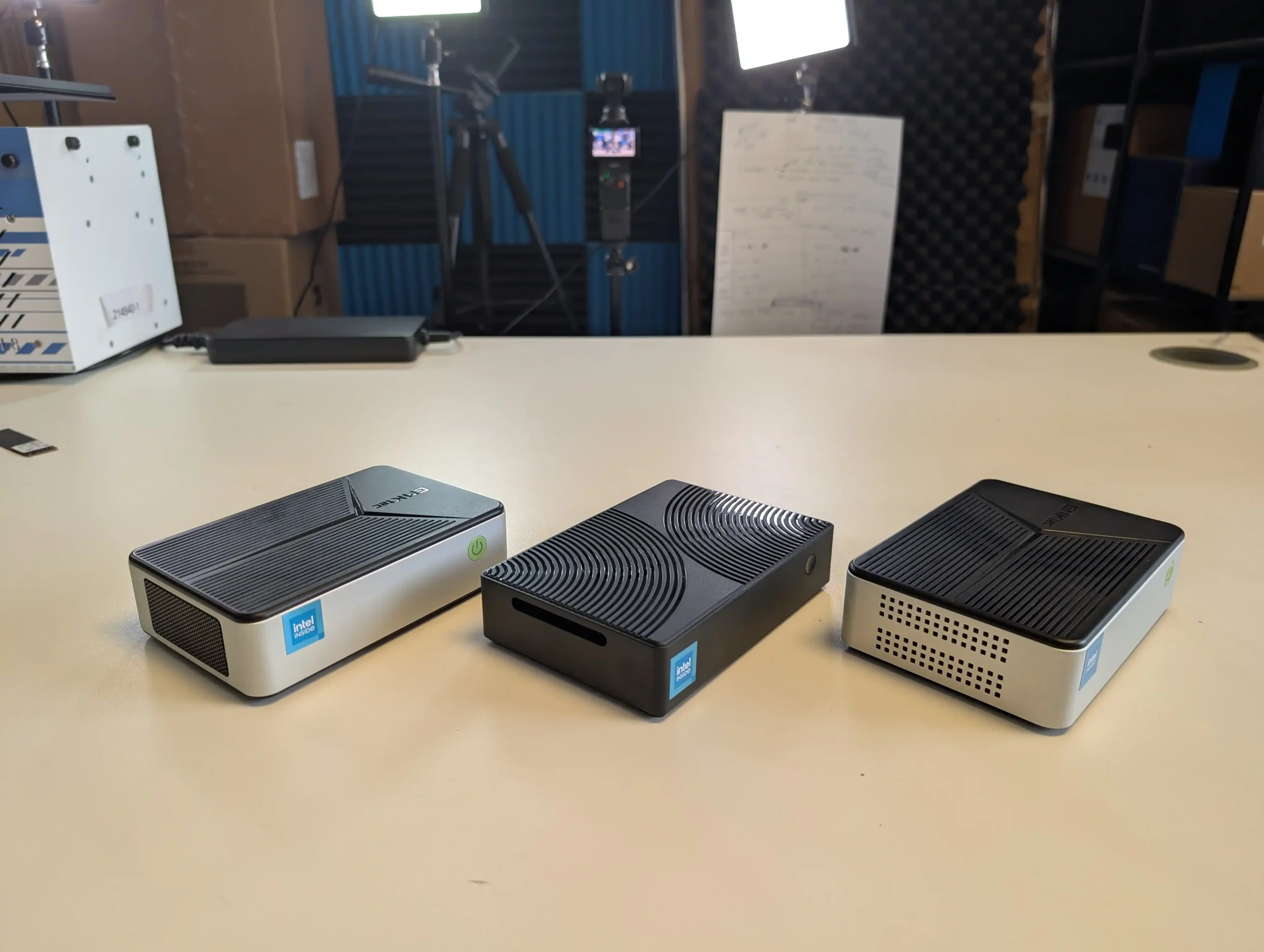
GMKTec G9 Ver.2 NAS Review – Verdict and Conclusion
The GMKTec G9, in its improved form, shows that the brand has listened—albeit cautiously—to thermal concerns raised by users and reviewers of the original model. The changes introduced in this updated version are minimal but measurable: better ventilation on the top panel and side mesh grille allow modest airflow gains, which result in lower surface and SSD temperatures across the board. Yet, GMKTec has stopped short of making any internal or structural upgrades that would more directly resolve thermal issues, such as introducing a metal baseplate, bundling SSD heatsinks, or adjusting the system’s internal fan architecture. All other hardware elements—CPU, memory, SSD configuration, I/O, BIOS, and software readiness—remain identical. As a result, while the device performs better in heat dissipation than before, it does so by a margin that may not justify an upgrade for existing G9 users. First-time buyers, however, may find it to be a safer choice now—particularly when paired with aftermarket heatsinks and used in moderate workloads.

However, the presence of the Xyber Hydra in the same price bracket poses a critical challenge to the G9’s value proposition. Offering the same N150 CPU, more memory, and a far superior thermal design with an integrated metal heat-spreading base, the Hydra addresses nearly every lingering complaint about the G9 without altering the system’s core layout. For prospective buyers deciding between the two, the G9’s only advantages now lie in its wider availability, slightly more recognizable branding, and marginally more mature firmware support. If those factors matter less than thermal reliability, long-term SSD health, and RAM headroom, then the Hydra is the more complete solution. Ultimately, the improved GMKTec G9 is a more stable and better-performing version of its former self, but its restrained upgrades feel like a missed opportunity in a market where near-clones have already moved ahead in meaningful ways.
Where to Buy?
|
| PROs of the GMKTec G9 NAS | CONs of the GMKTec G9 NAS |
|
|
📧 SUBSCRIBE TO OUR NEWSLETTER 🔔
🔒 Join Inner Circle
Get an alert every time something gets added to this specific article!
This description contains links to Amazon. These links will take you to some of the products mentioned in today's content. As an Amazon Associate, I earn from qualifying purchases. Visit the NASCompares Deal Finder to find the best place to buy this device in your region, based on Service, Support and Reputation - Just Search for your NAS Drive in the Box Below
Need Advice on Data Storage from an Expert?
Finally, for free advice about your setup, just leave a message in the comments below here at NASCompares.com and we will get back to you. Need Help?
Where possible (and where appropriate) please provide as much information about your requirements, as then I can arrange the best answer and solution to your needs. Do not worry about your e-mail address being required, it will NOT be used in a mailing list and will NOT be used in any way other than to respond to your enquiry.
Need Help?
Where possible (and where appropriate) please provide as much information about your requirements, as then I can arrange the best answer and solution to your needs. Do not worry about your e-mail address being required, it will NOT be used in a mailing list and will NOT be used in any way other than to respond to your enquiry.

|
 |
Minisforum MS-02 Ultra - WHO IS THIS FOR??? (The First 48HRs)
Why People Use TrueNAS, UnRAID and Proxmox to Turnkey NAS (Synology, QNAP, etc)
Why People Prefer Turnkey NAS vs TrueNAS, UnRAID and More
The Top 5 Mistakes NAS Buyers Make
Top 5 PLEX/Jellyfin NAS of 2025
Seagate Ironwolf vs WD Red NAS Hard Drives
Access content via Patreon or KO-FI
Discover more from NAS Compares
Subscribe to get the latest posts sent to your email.


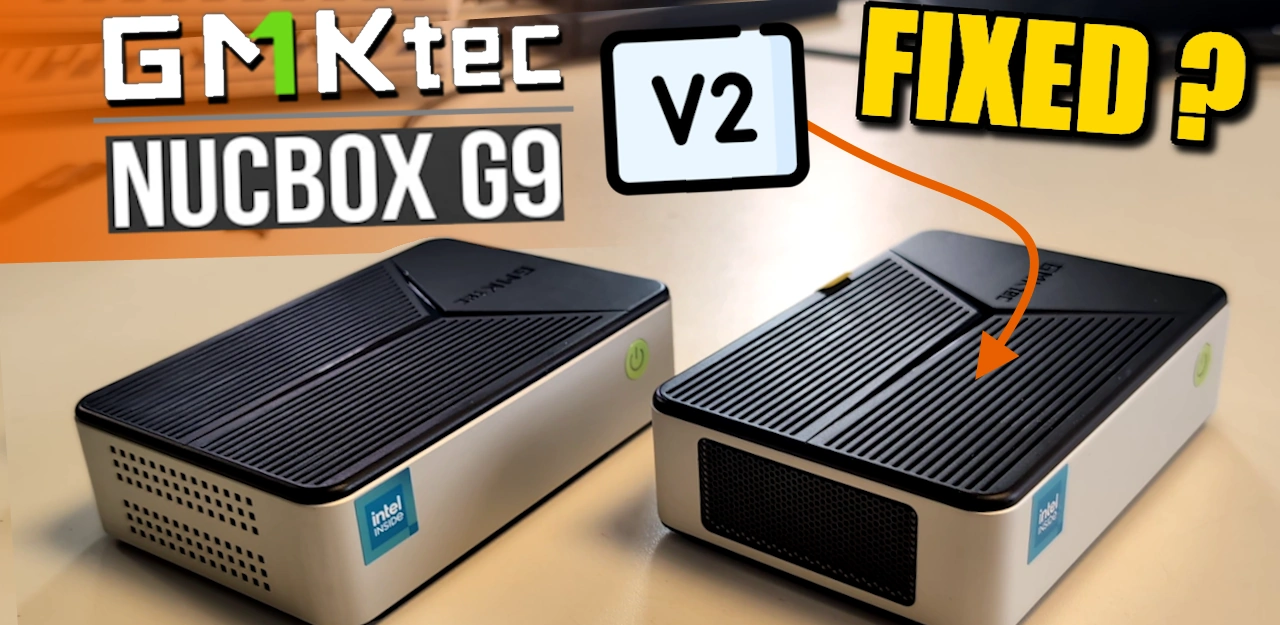



That base panel is sitting on the table with hardly any gap. With low air flow it’s not gonna cool so easily. Just put it on a Router cooling pad and connect the fan. That should make it way faster.
REPLY ON YOUTUBE
wish they had an upgrade kit
REPLY ON YOUTUBE
soon get some metal added to that!
REPLY ON YOUTUBE
Since is this is dual boot and it has 4 ssd slots, does that mean you run 4 different operating systems? one on each ssd?
REPLY ON YOUTUBE
REPLY ON YOUTUBE
Why do they not just deliver these boxes with feet so you can let them stand up? Seems like a no brainer to me?
REPLY ON YOUTUBE
bought one, considering returning it since it randomly forgets the nvme modules no matter how much i change the modules to the slots. however, for the heating probs i would put heat sinks on the nvme, keep the cover away and put the box a bit higher with rubber feets to let the hot air our directly an not pushing it through the small channel on the bottom.
REPLY ON YOUTUBE
What’s up with those ‘British teeth’ ?
REPLY ON YOUTUBE
thank you
REPLY ON YOUTUBE
How many mm from the top of WIFI card to the FAN connector ?
Would an m.2 E key to m.2 B key fit there ? length wise (I know there’s not mounting hole) ? (how much room is there height wise) ?
Thank you!
REPLY ON YOUTUBE
Well, I ultimately decided to buy the G9 because the website said it had improved cooling.
It turned out to be pretty good; rendering videos from JellyFin, the iGPU usage stayed above 60%.
And the x86_pkg_temp temperature stayed between 51° and 57°.
REPLY ON YOUTUBE
Question for you, were you ever able to get your n150 to hit the max boost of 3.6 GHz? Even with it under load and cooled to 70° c I cannot get it to get past 2.9GHz.
REPLY ON YOUTUBE
I drill a bunch of holes in the cover for the SSDs and bought a miniature USB powered fan to blow across the opening of my first generation unit. Temps when installing a game via steam (it’s my main steam repository) went down over 20° c. ???? Next step is to pull the case off and vent the plastic over the fan shroud. I didn’t get a before and after on the SSDs but I can tell you just from putting my hands on it that it is DRAMATICALLY COOLER!
REPLY ON YOUTUBE
I’ve been holding off on the minibee because of reports of problems when all 6 bays are full.
I think I’m going to jump on this device, it looks perfect.
Unfortunately your affiliate link looks broken.
REPLY ON YOUTUBE
Maybe they will sell up upgrade aluminum veritcal stand that attaches via the plastic base plate points? ????
Heatsink and stand all in 1.
REPLY ON YOUTUBE
It’s quite stunnning that on the first “version” they did not include at least a radioator or fan… 5 minutes of testing and it showed close to dangerous temperature
REPLY ON YOUTUBE
I don’t see any link to the Xyber Hydra in your list of links above. Perhaps because it’s not yet available? I reckon.
BTW, on that note, It is good to see you include Aliexpress links. I being in Japan and a prime member at Amazon JP, I don’t think your links connect there, but Ali is an option.
REPLY ON YOUTUBE
I have one of the newer ones. Paid £130 with a 128Gb SSD.
It has been running for a week and is just fine for my use case, as a mini PC, with added internal storage options.
The motivation for being able to power through both ports is because it was noted by reviewers. Perhaps of use when using DP out to a portable monitor, where passthrough is an option.
As the panel is on the base, it could always be removed, especially if sitting on a flat surface.
I would add heatsinks as a default with all drives on any system. It just makes sense.
Perhaps GMKTec could offer a metal plate themselves to existing customers.
REPLY ON YOUTUBE
I realise you’re not the only channel reviewing these things, but it must feel rewarding when a manufacturer modifies a product as a result of something you’ve covered in a video.
REPLY ON YOUTUBE
so if you combine the V2 with that other OEM brand one with the metal cover then you have a fairly decent one…
REPLY ON YOUTUBE
Replaced the old model G9 with a Beelink ME mini and haven’t looked back.
REPLY ON YOUTUBE
So glad I stuck with Beelink Me Mini ,,, None of the problems like the GMKTec paperweight .. and 2 more nvme slots
REPLY ON YOUTUBE
Why is everybody making these cheap nvme nas based on Intel. What about amd? 5700U perhaps?
REPLY ON YOUTUBE
You say this is a nas, but this devices proper function is more for IoT type work
REPLY ON YOUTUBE
I can’t see the point of that device until you can buy 16TB NvMe drives…..
REPLY ON YOUTUBE
Robbie, I realize that heat is just one factor, but would this slight redesign change your conclusion in your comparative review of July 9, 2025 ?
REPLY ON YOUTUBE
I reveal the same problem the cooling mmm gmtek have same problem on all system. THE BASE THE BASE MUST BE METAL ARGGG!!
REPLY ON YOUTUBE
So still not worth getting… ????
REPLY ON YOUTUBE
1) The SSD in position 1 doesn’t need a heatsink since it’s right next to the cooling fan outlets. Having a heatsink on that SSD only blocks the air from getting to the other SSDs.
2) Attach a 40mm USB fan to the exhaust grill of the unit to actively draw the stagnant heat out of the case (I just use duct tape). It makes a huge difference. My hottest SSD that used to run at 72C now peaks at 52C. The CPU runs 10-12C cooler as well.
REPLY ON YOUTUBE
Ah there’s the heatsink I suggested they needed hiding on the zyber instead
REPLY ON YOUTUBE
My biggest concerns on all of these mini-PCs types devices is HEAT. Any type of load causes too much heat and major throttling.
REPLY ON YOUTUBE
Thank you for this. I saw the upgrade version on amazon saying it was plus but not other indication if it was just words, as there were no updated pictures to go with it. Lazy all around, even in advertising their product. Its a shame they just waste even more money when they could have done a total redesign. This needs standard PD power and not the PD power brick that will fry sny other device. The first nas that offers 2 lanes per channel, multi ssd and is not garbage and has real visble PD power for travel gets my money. Sadly no device exists yet
REPLY ON YOUTUBE
Good video, thanks for the honest covering.
REPLY ON YOUTUBE
No sense, they did two minor changes but… the big problem still there, why they still having the plastic cover??, absolute nonsense
Thanks for the video man!
REPLY ON YOUTUBE
Still Beelink ME mini is the only mini NVME NAS they actually put some thoughts in its design, others like GMK just put two boards together and install some fans on top.
REPLY ON YOUTUBE
For once in my life I decided to impulse buy a hardware instead of diving deep into the alternatives and researching for weeks and here are much improved versions on the market couple months after my purchase lol.
3:12 could it be that they finally adapted proper usb c power delivery? I remember seeing it in another review that the usb c power adapter of the gmktec g9 is not up to spec and could fry any other usb c powered device, making the whole usb c charging feature meaningless (I’m salty about this since this was one of the featues that convinced me to purchase one.)
REPLY ON YOUTUBE
I ordered my G9 a few months ago with the knowledge it was… a bit s-hite. I just needed something that would sit there quietly and not have to do much. However, I was surprised to find the temps were not that terrible, even with my very, very, very, very reserved expectations.
Seeing the two side by side, I can see I actually got the V2, and never realised. From your temp tests, it looks like that side vent is doing a lot of the heavy lifting now.
Having said that – I still have not loaded it up to the max, and I have no intention to ever rely on it to do so.
Also, I need to buy SSD heatsinks.
REPLY ON YOUTUBE
So had anybody 3d printed their own panel to fix this originally? Did you forget to the put the Xyber Hydra link in the description?
REPLY ON YOUTUBE
can u test this v2 with the metal backplate from hydra and compare for us?
REPLY ON YOUTUBE
jeff geerling found way more issues than just overheating. It had power stability issues too. He managed to hack his into a vaguely stable state, but I’d give it a wide berth. I’ve bought the beelink mini 6 bay…
REPLY ON YOUTUBE
Actually cancelled my order after reading the reviews and seeing how many had stability issues do cooling problems. Now I’m waiting on the beelink.
REPLY ON YOUTUBE
Why would you half arse a refresh and not put finned metal panel on the ssd bay it must cost pennies.
REPLY ON YOUTUBE
I just wish there was a similar device but with ECC, some of us would be willing to pay that premium.
REPLY ON YOUTUBE
Can the Ram be upgraded??? -would like 16gb Min upwards of 32gb of ram…
REPLY ON YOUTUBE
Hi en aluminium ce serais mieux et avoir 16go ram au lieux de 12 car on peut pas la up, et une mémoire mmc a 128go pour 200 a 250euro sans SSD cela aurais était cool ainsi on aurais de meilleur performance car plus de ram et les 128 go eMMC on aurais pu installer windows 11 et avoir les 4 SSD libre pour du raid 1 2x2to ou plus 4x4to cela nous fait 4 a 8to sécurisé.
REPLY ON YOUTUBE
I wonder if you could mount an external large quiet USB fan on that metal plate, easy enough
REPLY ON YOUTUBE
Thanks a lot for this great review @nascompares
At the end, I decided to buy one, as a testbed for ZimaOS. Waiting for your video to better understand how to install it and optimise it maybe.
A quick question, as I don’t remember if you mentionned it : can we use NVME M.2 with thermal dissipator, into the Xyber Hydra Nas ? Is there enough space for that ?
REPLY ON YOUTUBE
Where can this be purchased in the United States?
REPLY ON YOUTUBE
They can rename the brand as often as the want, but the name “GMKtec” (G9) is burned…
Sorry, but after the failure of G9 i tryed the cwwk p5, and later on the BeeLink Me mini.
Okay, Gen 3.1 for the storage… for me it´s fine; and with USB-Stick as Boot drive , or the emmc. It´s fine to; Even my modificated p5 works fine
As basic build, i had both in my sleeping room, without “fear”, that i get fried over night, and even under work, they stayed cool (Summertime/30 degrease in the sleeping room)
U still get the Me mini for 209 nickers (basic), and the cwwk is a little bit higher (There are same “builds/other name” on amazon; a bit cheaper)
Spoiler: After some troubles (Front USB/temp. went up to 80 degrease, than i throttled) on the BeeLink in combination with the use of the front USB 2 Port; and the help of the support team, i made a bios update; now it work fine again.
For them who fear to make a bios update (it s easy)… after restarting the Me Mini, and removeing the front USB-Stick, all temps where okay again
REPLY ON YOUTUBE
Get the coolest SSD you can find. Don’t focus on performance. The system is limited by the NICs speed, even if you gang them together. Go with PCIe 3.
REPLY ON YOUTUBE
Please use your influence as a creator to get an answer out of GMKtec as to whether they will address the defective product that is the G9 and supply these upgraded parts to people who purchased one.
REPLY ON YOUTUBE
Is the WiFi a CNVio2 card? I want to make a portable router out of one of these but the wifi keeps holding me back
REPLY ON YOUTUBE
Head anyone reviewed the morefine m10s. Similar build out but I think there are some differences with additional fans.
REPLY ON YOUTUBE
Just looked up the cost of this on their site & it $70 cdn to ship to canada on a $307 mini nas, No Thank you
I have a what looks to be a update Gmktec unit coming from Amazon to my $302, will see what actually arrives
REPLY ON YOUTUBE
The specs it shows in the website is confusing, one part claims to have 16gb of ram, the other says 12gb.
REPLY ON YOUTUBE
Would get if GMKTec made it with the corrections. Like their stuff overall…
REPLY ON YOUTUBE
8:00 Definitely stick on 4 elevated rubber feet to improve passive air flow under the case. Of course, you could set the box on top an external USB fan for further active cooling.
REPLY ON YOUTUBE
The N150 has only 9 PCIe gen3 lanes to work with. So how are they using 8 of them for the the 4 NVMe drives, while having a pair of 2.5Gb NIC’s?
REPLY ON YOUTUBE
In general, people who claim that “you don’t need ECC!” should try first of all to understand how a capacitor in the order of single-digit femtofarads (yes, femto) works.
REPLY ON YOUTUBE
It wouldn’t bother me if the case was half or double height taller if included heatsink/fan combos to help with cooling.
REPLY ON YOUTUBE
stop xybering me
REPLY ON YOUTUBE
Please, please compare the gmktec or its knock-off to the Maiyunda M1S – I’d be really interested to see the difference. Also kudos on testing ZimaOS – nice to see the variety. Great video – thank you!
REPLY ON YOUTUBE
I’m about to check out the Beelink ME mini
REPLY ON YOUTUBE
better than cwwk p6?
REPLY ON YOUTUBE
IMO the temps aren’t bad tbf. I’d be using it once or twice a day. Shame it doesn’t cool down as fast as we would like. Also with the fans set to max, it’s not too bad but will definitely be in the office ????
REPLY ON YOUTUBE
The only thing that will work with those being under instead of the top will be a fan there. That’s the problem I had with my firewall mini PC. Everything was fine until I added a fan. My memory got cooked there before that fan was installed. It’s just not a good design putting components like that underneath.
REPLY ON YOUTUBE
Thermal design is still poor, better options will surely come. Right now the beelink looks the best if the form factor isn’t an issue.
REPLY ON YOUTUBE
Can you compare it to the CWWK P6 and Beelink Me pocket nas?
REPLY ON YOUTUBE
So the OS has to reside on one of the four raid ssds?
REPLY ON YOUTUBE
Instead of two ethernet ports I’d rather have one 1G ethernet and one Mini GBIC for 10G or even 25G. Just about every decent switch has two 10G Mini GBIC ports. Keep the copper 10G heat out of the tiny box. Form factor should be square with a single standard 120mm (or 92) case fan in the bottom blowing up.
REPLY ON YOUTUBE
It hurts my soul to see any NVMe NAS with anything less than 10Gbps…
REPLY ON YOUTUBE
Hi Mr. NASCompares, do you known the reason why A brands like Gigabyte, ASUS ect. don’t sell motherboards for the N150.N355 line?
REPLY ON YOUTUBE
One thing about ECC, these chips can’t run “conventional” ECC that need additional memory modules to store checksum, but they support in-band ECC which instead reserves space to store the checksum. It provides the same function as normal ECC while using normal memory, but comes with quite a bit of performance and some capacity penalty. It needs to be activated by the vendor though. So far I have only seen the latte panda mu and the odroid H4 line using it
REPLY ON YOUTUBE
You can put a pig in a dress, but it’s still a pig. As they say, somewhere or other.
REPLY ON YOUTUBE
This looks like a nice little device, I’m a fan of these 4-nvme devices showing up on the market. (my use case would be small low-power proxmox hosts with distributed storage), they look like two of them could fit together in a 1U Rack, though the cooling might be a bad idea at the moment 🙂
REPLY ON YOUTUBE
9:06 Could you test it on a cheap usb laptop cooler? I wonder how much of the result is skewed by it marinating in its own exhaust.
REPLY ON YOUTUBE
First off, I’m glad to see ZimaOS getting some coverage and use in these tests. Yeah, it doesn’t have all the bells and whistles of Truenas but I really like the simplicity and ease of use. If my Beelink Me Mini ever arrives, ZimaOS is getting installed on it.
Glad to see the G9 get a redesign for the cooling issues. As someone else mentioned, it would have been nice if the new part was backwards compatible and available for everyone who bought the G9. It would have generated a lot of good will for GMKtec to make that part available for the original G9.
REPLY ON YOUTUBE
I like that the Hydra has more RAM (16 GB) and better thermals than G9. I would consider getting it with the standard 512 SSD for $219. That’s a fair price, but then there’s the barebones ME for $209!
REPLY ON YOUTUBE
3:26 You should always get a NAS with a full metal jacket! This is my NAS. There are many like it, but this one is mine. ????
REPLY ON YOUTUBE
I always have to chuckle when people complain that these kinds of devices “only” have 2.5Gbit Ethernet. Most of my network is still 1 Gbit Ethernet and I have a 100/40 Mbit/s DSL connection to the Internet. 10 Gbit would be complete overkill for my use case.
REPLY ON YOUTUBE
Thank you! I’d say you might be missing one use case for these devices ????
I got the G9 to be a portable media device and a backup for my phones while traveling. With Jellyfin and a power bank to power it on the go. there aren’t many devices like this that can run off USB-C power.
REPLY ON YOUTUBE
will making this stand on its side improve the thermals ? or maybe it is not possible since it will block all the vents / ports ?
REPLY ON YOUTUBE
gmktec should be providing these metalic heatsinks free of charge for the unfortunate customers that bought their gmktec g9.
REPLY ON YOUTUBE
Thank you.
REPLY ON YOUTUBE
had one for under a month, returned it when it started to overheat & reboot with Plex media server running every 3-5 minutes.
REPLY ON YOUTUBE
Thank you for the video. Question, would this be a descent device to support a Proxmox cluster vm’s either through NFS or ISCSI trget? Any drawbacks?
REPLY ON YOUTUBE
My tame metalworker is pretty sure he can copy the SSD cover in steel or aluminium, which should improve it.
REPLY ON YOUTUBE
Bought one to use as an opnsense device because of the 2x 2.5G Intel NIC’s. Thermals over time is a big problem. opnsense with average throughput of about 10mbps running all the security features (unbound with block list, suricata, zenarmor, and a few wireguard connections) puts the CPUs at about 30% constant load. This causes the whole device to get quite hot to touch and fried the nvme that came pre-loaded from the OEM within about 45 days. Might have just been a one-off bad device so let’s see how the RMA goes, but if this was under constant load much higher I can’t really imagine how it would go. Very poor thermal design.
REPLY ON YOUTUBE
I bay it and sale after 2 days
REPLY ON YOUTUBE
Poor pc, very hi temperature in idle cpu
REPLY ON YOUTUBE
I wish they would have made ram replaceable and upgradeable. It has an amazing i/o for a mini pc, it does need some cooling fixes but overall good. Have you tried removing the wifi adapter and adapting that port for additional storage?
REPLY ON YOUTUBE
This probably the perfect NAS for my setup. I run 1Gbps on my LAN which I plan to upgrade to 2.5Gbps by swapping out the main switch. I have no need for 10 Gbps, so this looks great. Just got to remember to make sure I have heat sinks for the drives to keep the temp down. I’d be curious to see if there is a way to adjust the case to improve airflow. BTW, I’ve seen a lot people install OpenMediaVault on the eMMC just fine to build their RAID arrays.
REPLY ON YOUTUBE
I just got one last night, and I can confirm that the thermal management is a problem, but I did what any old-school overclocker would do in this situation: add a fan. I have this installed in my 10″ DeskPi rack with perforated shelves, so all I did was put a 120mm slim fan on the shelf beneath the G9 blowing air up towards it and the temps dropped 10 deg across the board.
I had no problems installing TrueNAS Fangtooth over the Ubuntu installation on the EMMC.
Since not all NVMEs are the same, I would advise that you check the temps of your drives. I had a Teamgroup MP33 in the mix that was idling 64deg (w/heatsink) and 74deg when writing, which I suspect was dumping way too much heat into the NVME compartment. I simply swapped it out for a different drive, which immediately brought the temps of the other drives down. I used the Scrutiny docker app in TrueNAS to monitor the drive temps.
REPLY ON YOUTUBE
I decided to get this one after looking at the cm3588 and ds224+.
ds224+ is $300 and only has 2 sata drives and 2GB of RAM…
cm3588 costs similar to this unit but doesn’t include an enclosure nor fans! Also the setup would have been complicated since it’s so barebones.
I’m very pleased this NUC/NAS is a thing as it’s plug and play out the box with an OS, has an enclosure with fans, and 1TB out the box. I got it for $230USD which I’m very happy about.
REPLY ON YOUTUBE
Not enough lanes per drive.
REPLY ON YOUTUBE
It would be great if you would answer the many questions people are asking in the comment section.
REPLY ON YOUTUBE
Is it good idea to install TrueNAS Scale on eMMC disk? Will it work or disk will be damaged to fast?
REPLY ON YOUTUBE
I got mine about a week ago, this is my first Linux NAS so I’m still figuring out TrueNAS Scale, I had to install version 23 because 24 wouldn’t install. I want it as an SMB server but I don’t know what I’m doing.???? so I’m fooling around with this after work and family.????????
REPLY ON YOUTUBE
just waiting for the G9 Plus for them to realize they need to change the bottom plastic plate to aluminum
then you can place it on top of a usb router fan for active cooling or another aluminum surface like an enclosure for passive cooling
nvme are stupidly hot, especially when you have 4 next to one another
REPLY ON YOUTUBE
will this accept only nvme drives or can I put “normal” m.2 ssds in there too?
REPLY ON YOUTUBE
you wont need any heatsinks on those nvme drives if they are running at pci gen 3×1, so that plastic bottom isn’t really an issue.
REPLY ON YOUTUBE
you could literally put this in your backpack and run a homelab wherever you go
REPLY ON YOUTUBE
this is what Synology should have done years ago
REPLY ON YOUTUBE
Great vod! I’ll pass on this one thank you for saving me $300. I agree with you should have added a metal bottom plate.
REPLY ON YOUTUBE
love this idea but id love it even more if they threw in some 10g ethernet nics and a couple more ssd slots
REPLY ON YOUTUBE
I’m new to all these NAS stuff, i was wondering if i can use this with my Mac Air. I have been using NVMe SSD’s and enclosures for my external storage but was looking to branch into using a NAS.
REPLY ON YOUTUBE
Can i use this to dl and play hvec 256 files ? And use this as a mini home pc ? I currently use a chromebook with 4gb ram and its lagging too much. I want dwcent power but super low wattage as im off grid. Thanks guys
REPLY ON YOUTUBE
It’s hard to give a good comment here. You talk to flippin’ fast! Either make the video longer or do it in two parts.
REPLY ON YOUTUBE
The frustrating thing I find with EVERY single NAS review video I have found. NO ONE SAYS, “If you just want a personal media server this is more than enough”. Like that would be a cool metric. To tell people that this unit would be a good personal media server for you and ya mum, or your family of 3
REPLY ON YOUTUBE
He mentioned that you wouldn’t want to rewrite the 64 gb Emmc with trunas….. Why would you not install it on the 64gb?????? Am I missing something?
REPLY ON YOUTUBE
Just got one of this and the heat problem is somehow worse than mentioned in the vidoe (maybe because of higher ambient) the drive sit idle at 70C which is obviously too hot. I only had several NVME heatsink so tried it and the temp drop by 10C (for the one applied) Some comment mention just leave the ssd cover open or get a custom heat sink to combat the issue I might try those
REPLY ON YOUTUBE
I have one of these setup, running TrueNAS. Seems to run hot – CPU cores are just under 60 degrees c. NVME SSDs are running at 48 degrees c with no heat sinks. Couldn’t install TrueNAS on EMMC so that was a bit of a waste, at least for now. I may have to go back and delete partitions off of EMMC somehow and reclaim the NVME SSD that has the OS on it. I also modified the fan curve via BIOS so the fans should be on more.
REPLY ON YOUTUBE
wondering if this could be a good little box for something like casaOs + immich
REPLY ON YOUTUBE
so… this ones crippled inside ChaChing:No Sale
REPLY ON YOUTUBE
DIY replacing this plastic plate with an aluminium one shouldn’t be a problem.
REPLY ON YOUTUBE
Just remove the drive bay door and set the NAS on top of a USB powered fan or laptop cooling pad (similar to the Targus Chill Mat) to keep the drives cool.
REPLY ON YOUTUBE
Proxmox on emmc? is that a thing? I’ve no idea. anyone enlighten me? x
REPLY ON YOUTUBE
Is it possible to install Proxmox on embbeded 64GB emmc drive? Also is it possible to install Proxmox cluster with Ceph on let say 4 of these nucboxes?
REPLY ON YOUTUBE
you’re saying dollars but think you mean pounds. because when i search its 210 dollars.
REPLY ON YOUTUBE
Any good for emulation upto X360
REPLY ON YOUTUBE
1.5GB/sec is more than 10gigabit mate.
REPLY ON YOUTUBE
Could I put a google coral in one of the nvme slots? Would it support the e-key dual coral?
REPLY ON YOUTUBE
My G9 arrived yesterday. Installed Open Media Vault onto the 64Gb internal storage with no problems. Checked 4 m.2 nvme drives in and it performs great. Unit and drives do get toasty! I’ve just installed heat sinks to the drives to see if that helps – 3mm fits fine with loads of space, could probably get 5mm maybe 6mm heat sinks in there.
REPLY ON YOUTUBE
Quick question, so is there 4 m2 lots with 1 used for the OS and then 3 for storage or is there an internal m2 ssd slot on the main board for OS and then 4 in the bay? Still waiting on mine to be delivered. Guess customs is wondering if they should hit it with tariffs or let it go. lol
REPLY ON YOUTUBE
I have one of these arriving this week. I am hoping to dip a toe into self-hosting with NextCloud running on Ubuntu Server. We’ll see how it goes.
REPLY ON YOUTUBE
Would this be a good solution for a simple NAS (storage only, no servers, VM, etc) for video files so they could be edited directly on the network?
Thanks
REPLY ON YOUTUBE
Just purchased this with 12+64G+1TB..needed an experimental pc.
REPLY ON YOUTUBE
Mine arrived and juse done a 30 minutes test
Both exhaust for cpu fan and nvme fan are bunch of small holes on the thick plastic casing , which trapped all heat there
Conside give it a mod to cut it wide open or replace with a better mesh ????
Bottom Plastic cover for ssd maybe go get a copper plate and replace it
Overall is kinda good for me except design bug above …
REPLY ON YOUTUBE
why my n100 is only consuming 6/10w? this should be 6w tdp right?
REPLY ON YOUTUBE
what about leaving the plastic panel off the unit completely ? would that suffice for cooling in a warm environment ?
REPLY ON YOUTUBE
What’s the height of the included m.2 heat sink? 3mm? 6mm?
REPLY ON YOUTUBE
This is REALLY interesting for me for a travel NAS.
TrueNAS docs say they need minimum 16GB, but recommend 32GB for a boot disk. It seems like the 64GB EMMC would work for this just fine but I haven’t actually tried it. You recommend against it but didn’t elaborate on why. Why wouldn’t the on-board 64GB drive be sufficient to run TrueNAS (or why wouldn’t it be a good idea)?
REPLY ON YOUTUBE
Out of stock and dont know when they will be back
REPLY ON YOUTUBE
Could be an interesting DIY project: trow the plastic tray away, place a massive passive cooler (and maybe a PVM fan on the cooler) that covers all four SSDs. Then you can also remove the two laptop fans, making it possibly even quiter.
Could be an interesting/ fun project
REPLY ON YOUTUBE
A few questions: I’m assuming the Linux is preloaded on the EMMC or is the Win 11? Can I replace the Linux with Xpenology and still dual boot with Win 11?
REPLY ON YOUTUBE
Still single memory channel.
REPLY ON YOUTUBE
Plastic does seem a bad idea, a big metal heatspreader would be preferable. However, with so few gen3 lanes available for NVMe, you wouldn’t expect the drives to get all that hot under load. Dual 2.5G is great for this money. DDR5 makes a big difference with N150, so that’s nice to see. It seems odd to have so many USB ports etc, surely this is wasting PCI lanes??
REPLY ON YOUTUBE
Is it include windows 11 pro licence?
REPLY ON YOUTUBE
Great review with info. Was looking for a mini PC with multiple NVMe slots so I could easily test drives but wanted something low power and basically silent. Glad I came across this since it seems to be a recent release, and super cheap.
REPLY ON YOUTUBE
Thanks
REPLY ON YOUTUBE
We need an NVME drive review. Which NVME drives should I buy if I bought this? Yes there is the obvious wd red drives but each cost as much as this machine.
REPLY ON YOUTUBE
No mention the maximum capacity. 4tb per slot? Or can it run the 8tb Module ?
REPLY ON YOUTUBE
It cannot have PCIe3x2 for per NVMe. N150 CPU have max 9 PCIe lanes. Considering iy has bunch of USB3 and NIC it only have total PCIe3x2 for NVMe. And with chip ASMedia thay made 4 PCIe3x0.5 lane for NVM storages.
REPLY ON YOUTUBE
The only reason i am not buying this right now is all the negative comments i see about gmktec.
This is exactly what i need. My big nas is at my parents where electricity is much cheaper and there is gigabit symmetrical internet. I would put 4 tb in this to keep in my apartment as a lightweight nas that syncs regularly to the big nas.
REPLY ON YOUTUBE
Would’ve been useful to test temperatures with the cover off as well to prove or disprove your point. But still, it being metal does nothing. You’d need thermal pads between the drives and the metal plate, which means you’d have to deal with those pads every time you opened the system. Surely someone like you could find thermal pads and a metal plate around that size and fasten it up to see if it makes a big difference. Or put heatsinks on the drives to actually see what difference it makes. Sorry but I am so tired of people stating things as fact without testing them.
REPLY ON YOUTUBE
Did you really measure sound pressure with a phone with the microphone against the table?????
REPLY ON YOUTUBE
None of the links take me to anything here in the UK.
REPLY ON YOUTUBE
I wonder if it would function with the 8TB m.2 2280’s… 32TB might be nice. Sure would be better if the cover were metal and could contact the drives.
REPLY ON YOUTUBE
Can you test the idle power usage with ethernet connected and monitor disconnected?
REPLY ON YOUTUBE
is it possible to have a mini PC nas, with 8-24 x4 m.2 STANDING slots, to hold a NVMe 2/4/8TB SSD for each slot? what’s the smallest that mini PC can be?
REPLY ON YOUTUBE
Confused about max storage.. The GMKtec website says: “NAS expansion up to 32TB storage (4x 8TB)”, further down the page it says “Max capacity 16TB, 4TB each slot”… Which is it!
REPLY ON YOUTUBE
We finally got to that point of ideal performance and value too bad I can’t stand nvme storage on NAS, too small and too expensive
REPLY ON YOUTUBE
we got the insane read write speed from 4 ssd but only 2*2.5G Network? how to utilize that speed ?
REPLY ON YOUTUBE
How do these mini PCs actually hold up as NAS servers with external USB drive enclosures for multiple HDDs (like the RaidSonic Icy Box IB-3805-C31) running TrueNAS or Unraid? And more importantly, how’s the power consumption on setups like this, and do these external HDD enclosures properly handle different HDD power states (idle/sleeping)?
REPLY ON YOUTUBE
looks like one needs to 3d print a new bottom to mount proper fans and a proper heatsink… like nucbox k8 plus
REPLY ON YOUTUBE
Router box with built in steam cache? And I bet V2 has better cooling (see also M5 series)
REPLY ON YOUTUBE
Usb to 10 gig adapter? Usb gen3.2 should work right?
REPLY ON YOUTUBE
I would be tempted to use omv. I do not have experience with unraid I would be prepared to try it. I think it would be overkill, but why couldn’t I load truenas into the emmc? 64gB would seem enough.
REPLY ON YOUTUBE
NUC is not NAS
REPLY ON YOUTUBE
This compact NAS reminded me that I’d like to see some NAS manufacturers make units for the new 10″ mini rack system. Preferably with some 3.5″ drive capabilities. Have you seen movement in that area recently?
REPLY ON YOUTUBE
You’re a Brit. Why are you pricing everything in dollars?
We’ve got brains…we can work it out for ourselves. I regularly watch reviews from Aus, Philipines etc…they say prices in their _own_ currencies (as YOU should too!) Poor show.
REPLY ON YOUTUBE
Seems like a close competitor for the newest upgrade of the cwwk X86-P5 with the 4xM2 and case varient. They’ve started listing an X86-P6 with the N150/N355 options.
REPLY ON YOUTUBE
I’ll tell ya what… as a poor, this is an ideal piece of equipment. I have some extra fans I could use to cool the nvme bay. Drill some hoes in some plastic, add the fans call it a day.
REPLY ON YOUTUBE
My $99 OpenWrt One has a sold aluminum case so there’s no need of a fan. I wonder how hard it would be to 3D print an aluminum or magnesium door for this NucBox G9. Wouldn’t need to be thick.
REPLY ON YOUTUBE
Interesting! Thank you for this review. The potential overheating is my concern, a show stopper for me. This model looks like a good basis on which to develop a cooler model. Until a cooler model is available this model though is a hard pass for me. ????
REPLY ON YOUTUBE
Anyone find the bare model for sale? Amazon wants $369 for the 512GB model….
REPLY ON YOUTUBE
morer and cheaperer ssds and a cpu that can handle pcie bandwidths better….and usb4 to make it daisy chaineable…..ryzen 7320 with a massive passive would be a good option, and 16TB ssds with a pricetag of 30 eur per TB
REPLY ON YOUTUBE
Maybe it could be a jellyfin / media server that can be connected to a TV like a roku / apple tv
REPLY ON YOUTUBE
The plastic SSD access tray – just get a local metal work shop to copy it with the thermal pad issue solved by making it thicker if needs be…
REPLY ON YOUTUBE
6:13 “That wasn’t my knee.” ????
REPLY ON YOUTUBE
drives me crazy when companies build a small pc but have a massive power brick! just build
it in jeez
REPLY ON YOUTUBE
This sounds like a good unraid (backup) server. Some USB bays with spinning rust and call it a day ????
REPLY ON YOUTUBE
I’m into my mini pcs yet i’ve never heard of them
REPLY ON YOUTUBE
what is the max storage of this device, the GMKtec page shows both max 4tb per slot total 16tb and max 8tb total 32tb so which is it ????♂
REPLY ON YOUTUBE
But with max nvme 3.0 and 2,5Gb Ethernet, is heat a big concern if you just choose 4 nvme 3.0 drives at the level of ssd performance the system allow ? I fully agree that if they had thought it a bit more over and provided a metal bottom the problem would probably be completely gone. I would guess no one would choose high performance nvme 5,0 drives for this kind of product as they would never reach their full performance potential.
REPLY ON YOUTUBE
Two bits
REPLY ON YOUTUBE
Would be nice to see how truenas would performance on this.
REPLY ON YOUTUBE
Can you really connect it through usb-c to a computer, to use the drives?
REPLY ON YOUTUBE
The size is amazing, and the price seems so too.
The thermals and the limited capacity of the EMMC storage (that you said is not capable of having TrueNas), however, is quite disappointing
REPLY ON YOUTUBE
Also, what’s the max capacity per NVME drive? On the website sometimes it says 4TB per drive, others it says 8TB per drive
REPLY ON YOUTUBE
How would this be as an Ubuntu Docker machine?
REPLY ON YOUTUBE
How reliable is the inbuilt EMMC storage and RAM?
Because if they fail the whole unit is gone.
REPLY ON YOUTUBE
What a shame as for a few quid extra many of the downsides such as heat dissipation could’ve ben fixed. Given the cost of NVMEs a few quid extra would hardly dissuade anyone from buying.
REPLY ON YOUTUBE
Mini NAS with flash storage is great, hopefully they become more popular
REPLY ON YOUTUBE
I do like the fact they put in 4 NVMe slots! 10 Gig networking would’ve matched the SSDs performance perfectly, but good enough I guess… For the average user switching from a 2 bay HDD NAS, this will be a huge improvement! I’m thinking about getting one as a secondary on-site backup.
REPLY ON YOUTUBE
We REALLY need more higher quality non plastic versions of these with better ram, more cooling and metal casing!
REPLY ON YOUTUBE
Nice, but not for me. Maybe in a few years Nvme drives will be cheaper and can replace the old mechanical drives.
REPLY ON YOUTUBE
Great little device. The N1xx CPU is the gift that keeps on giving, even if it’s so PCI-limited.
I use Ubuntu as NAS OS. Cockpit + 45 drives plugins + zfs plus a few bits of cron automation for replication.
But anyhow, if Ubuntu runs, TrueNAS or Unraid will also run no problemo.
REPLY ON YOUTUBE
it hurts BIG TIME when you say 2 lanes is 2Gbits…. when it is 2GBytes
REPLY ON YOUTUBE
I just ordered one of those yesterday. They weren’t offering any drives at the time but fired it would be fun to play with. A little bummed on the emmc memory but for the cost what the heck
REPLY ON YOUTUBE